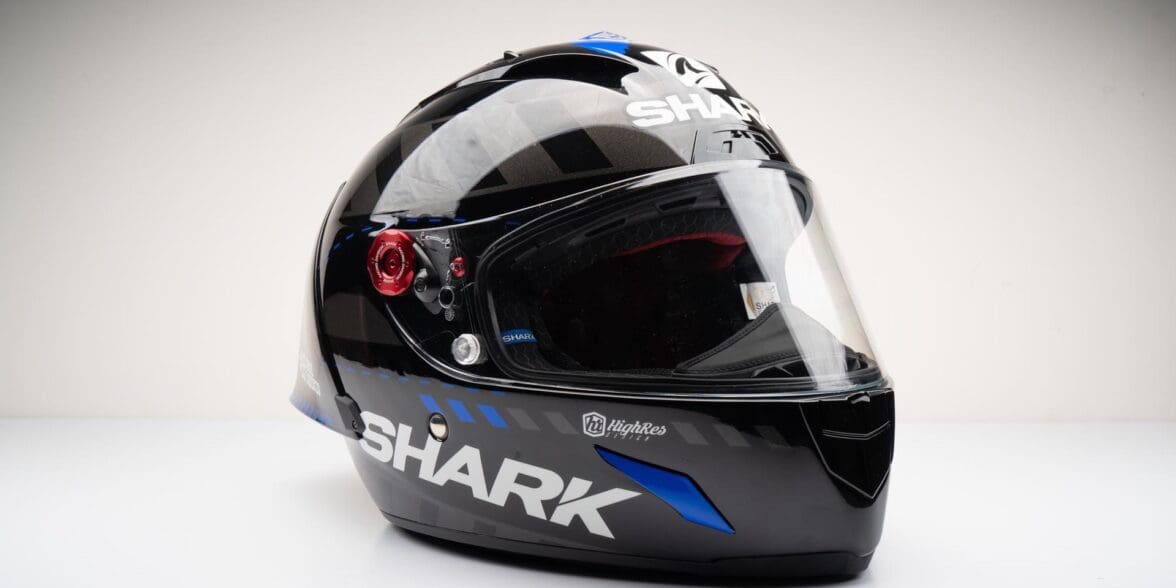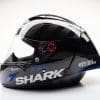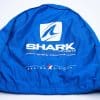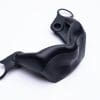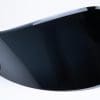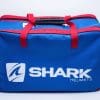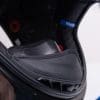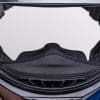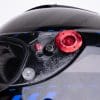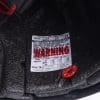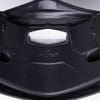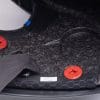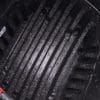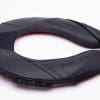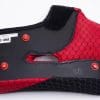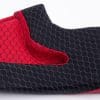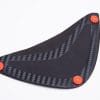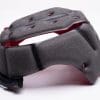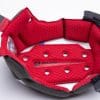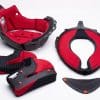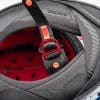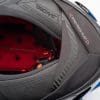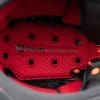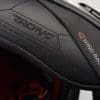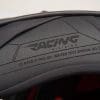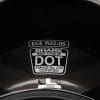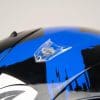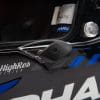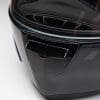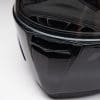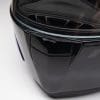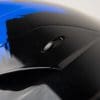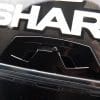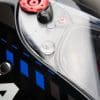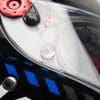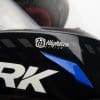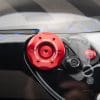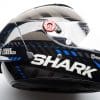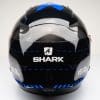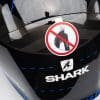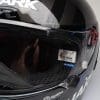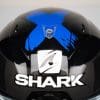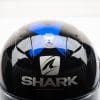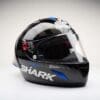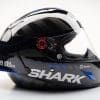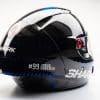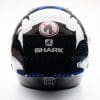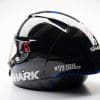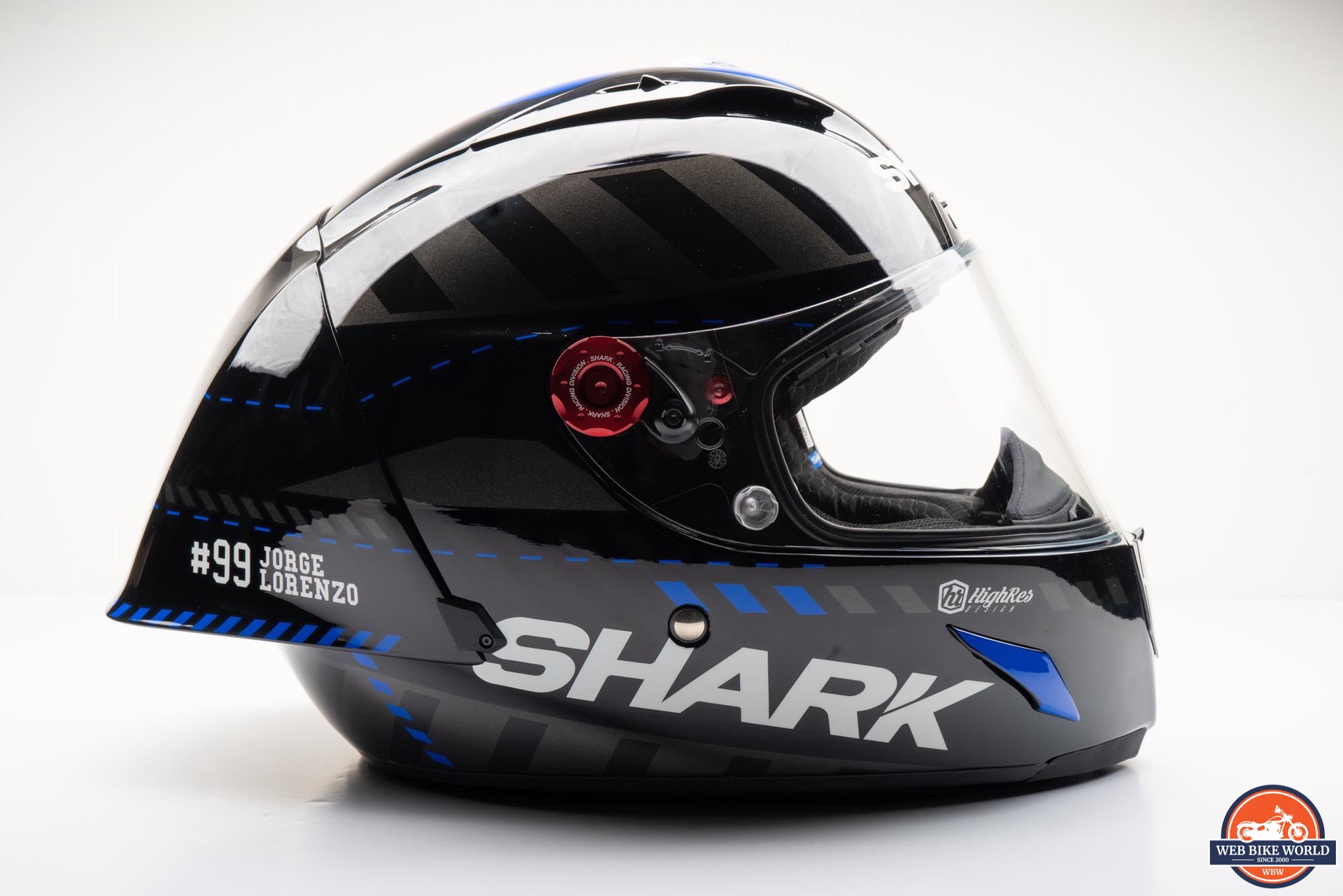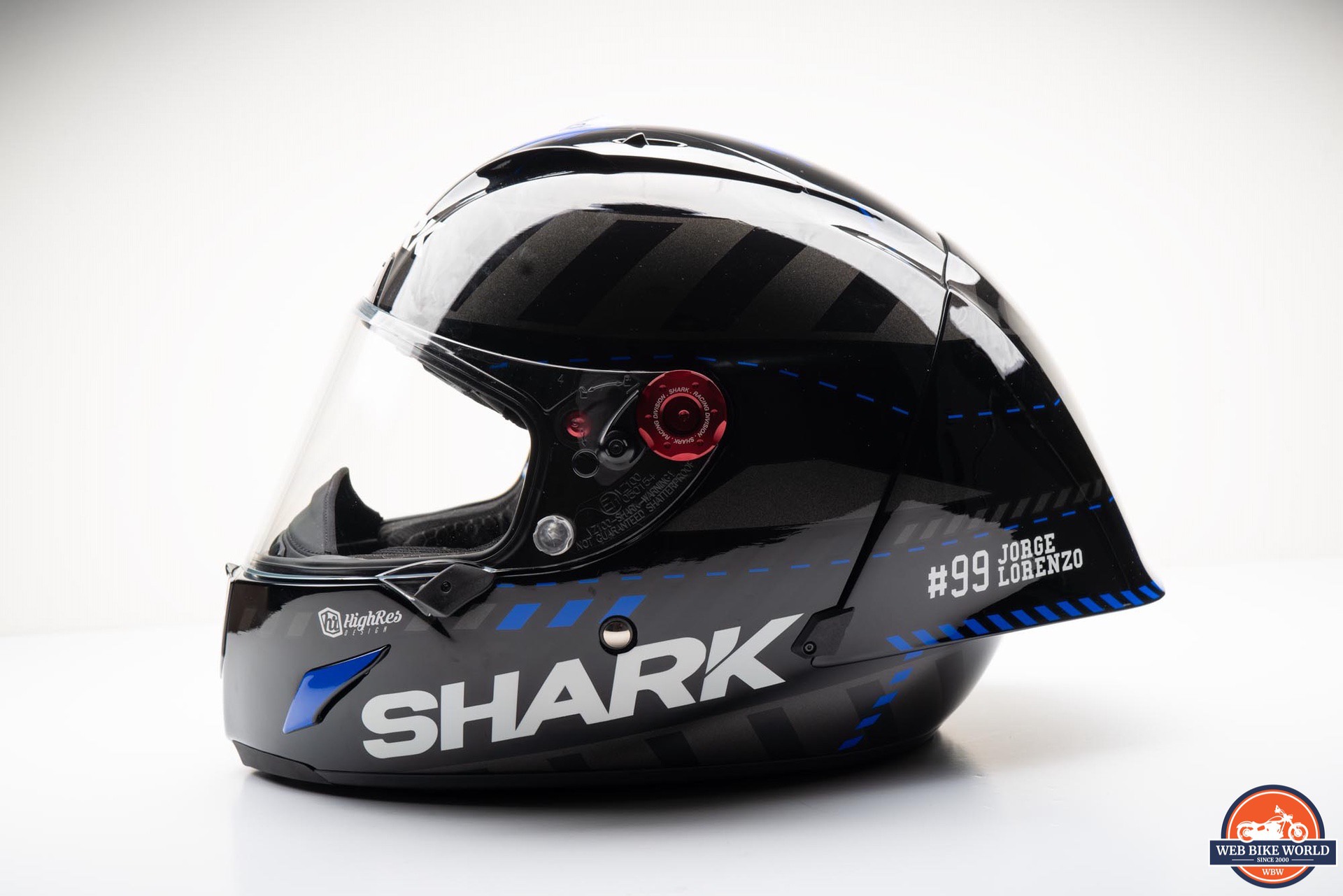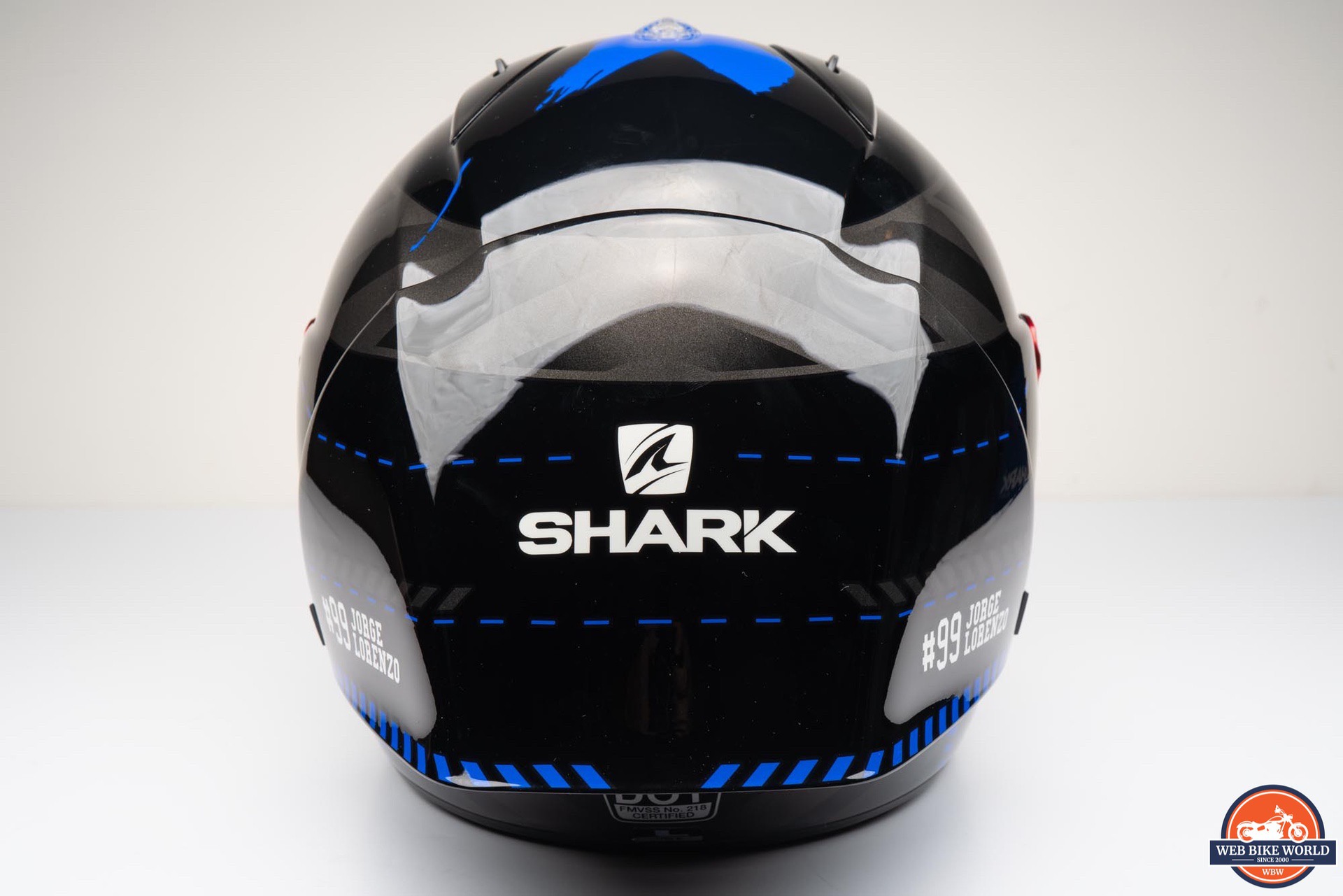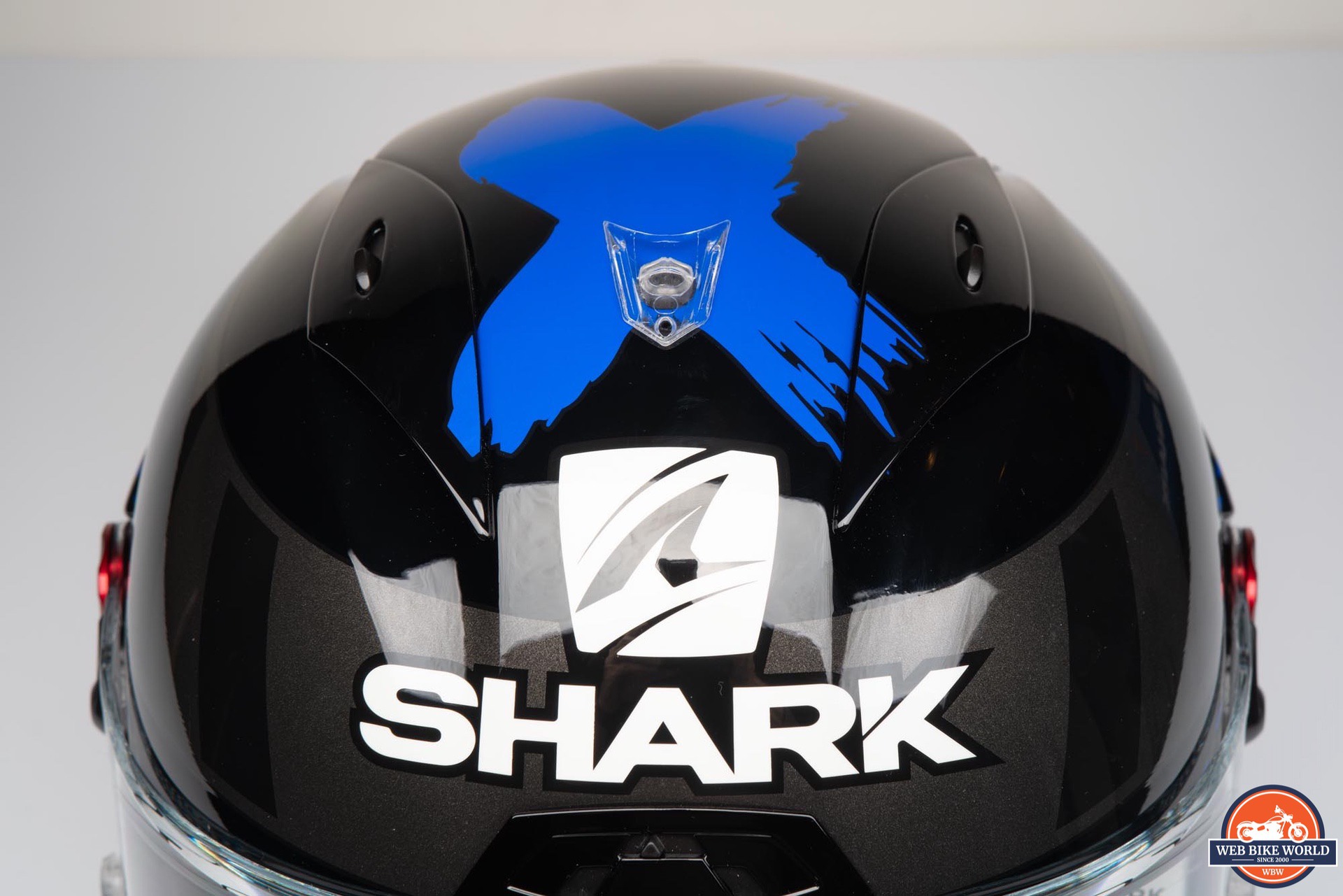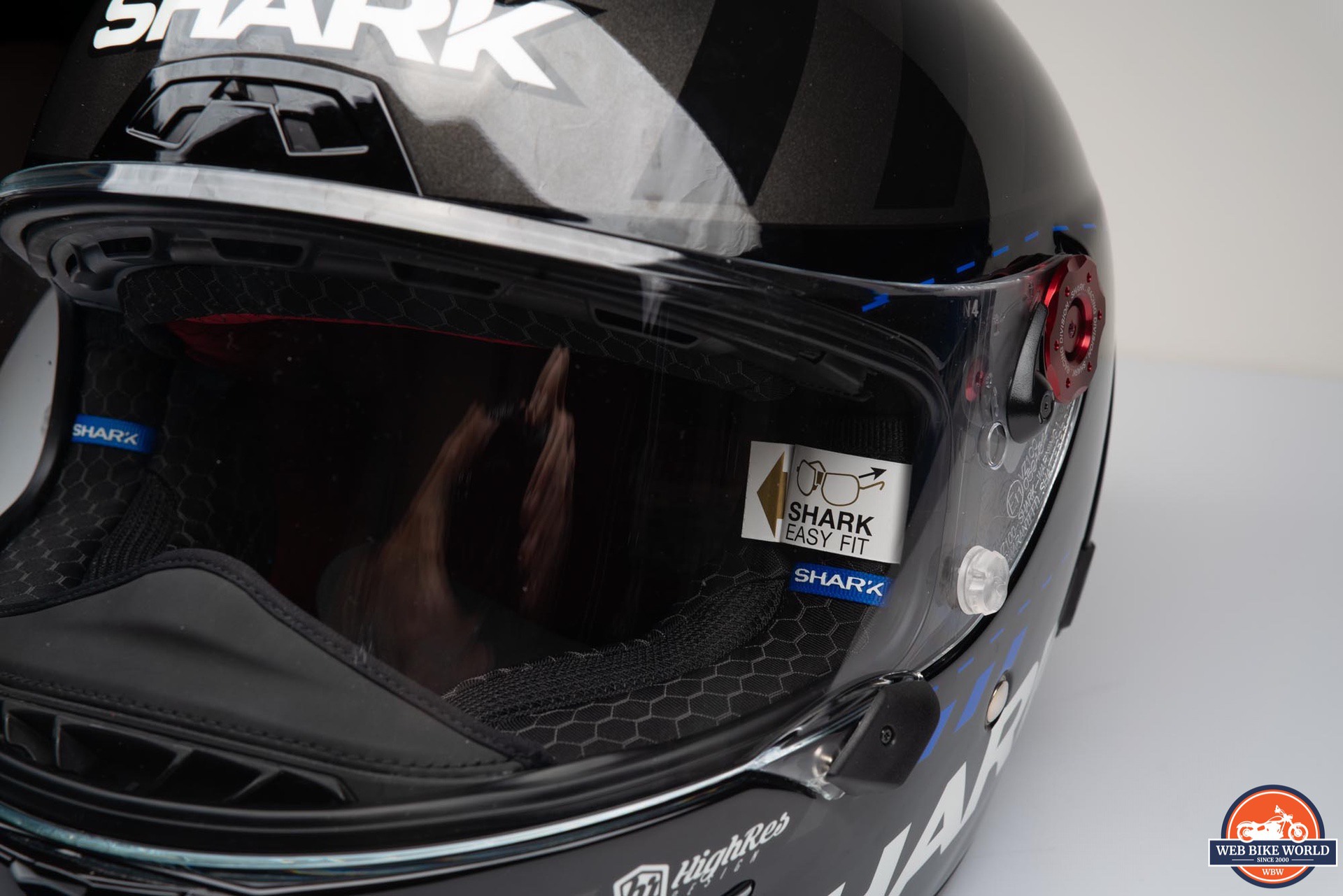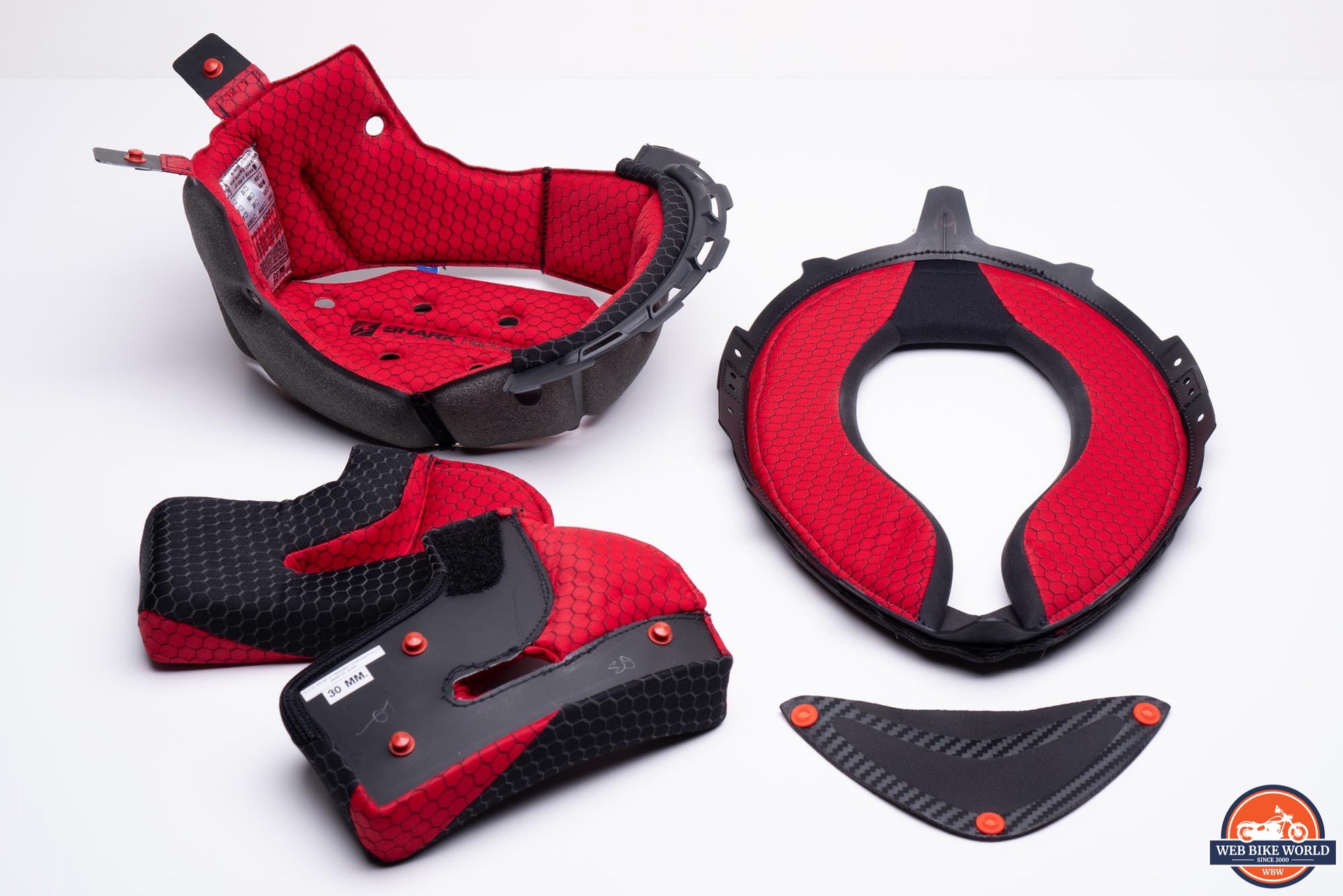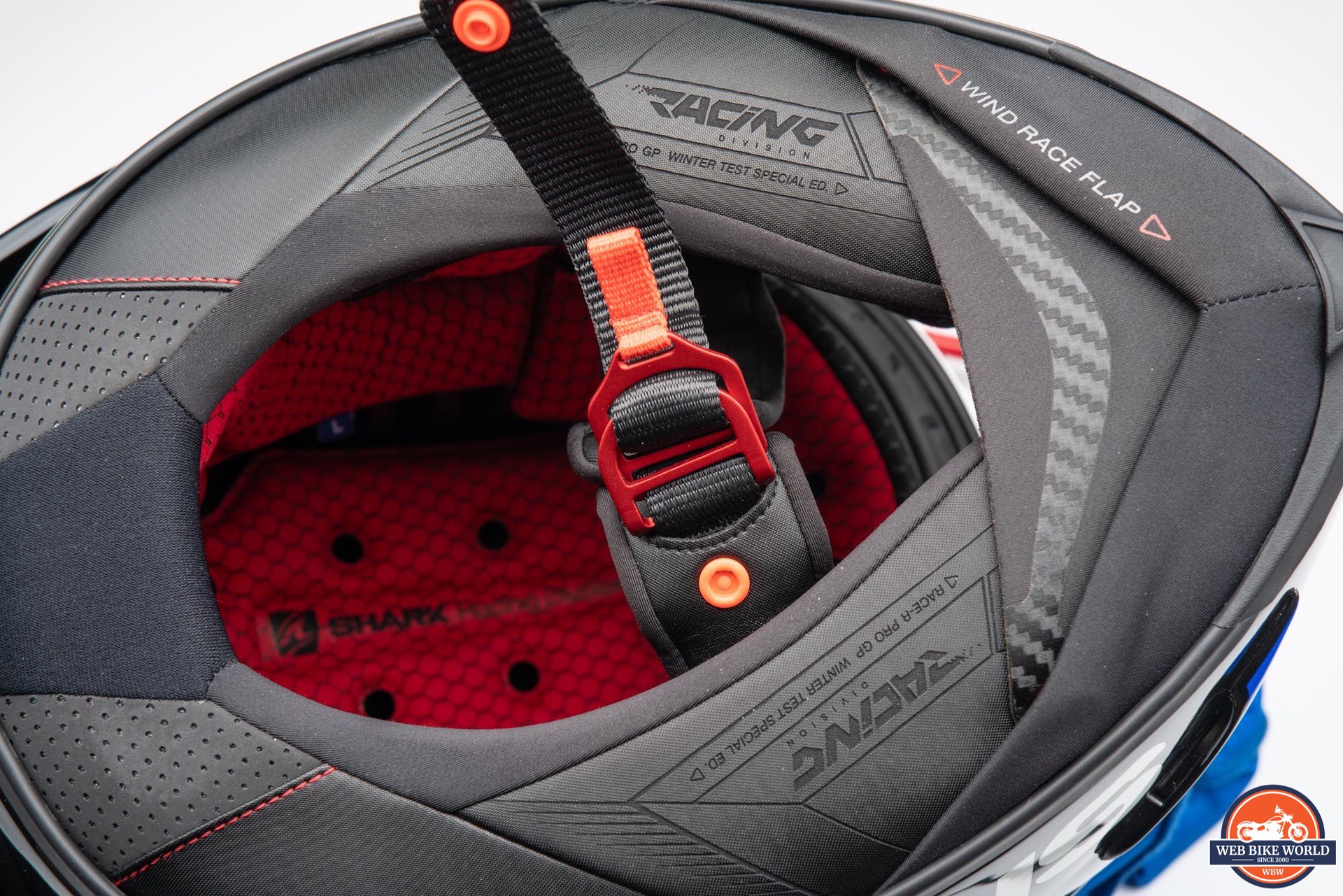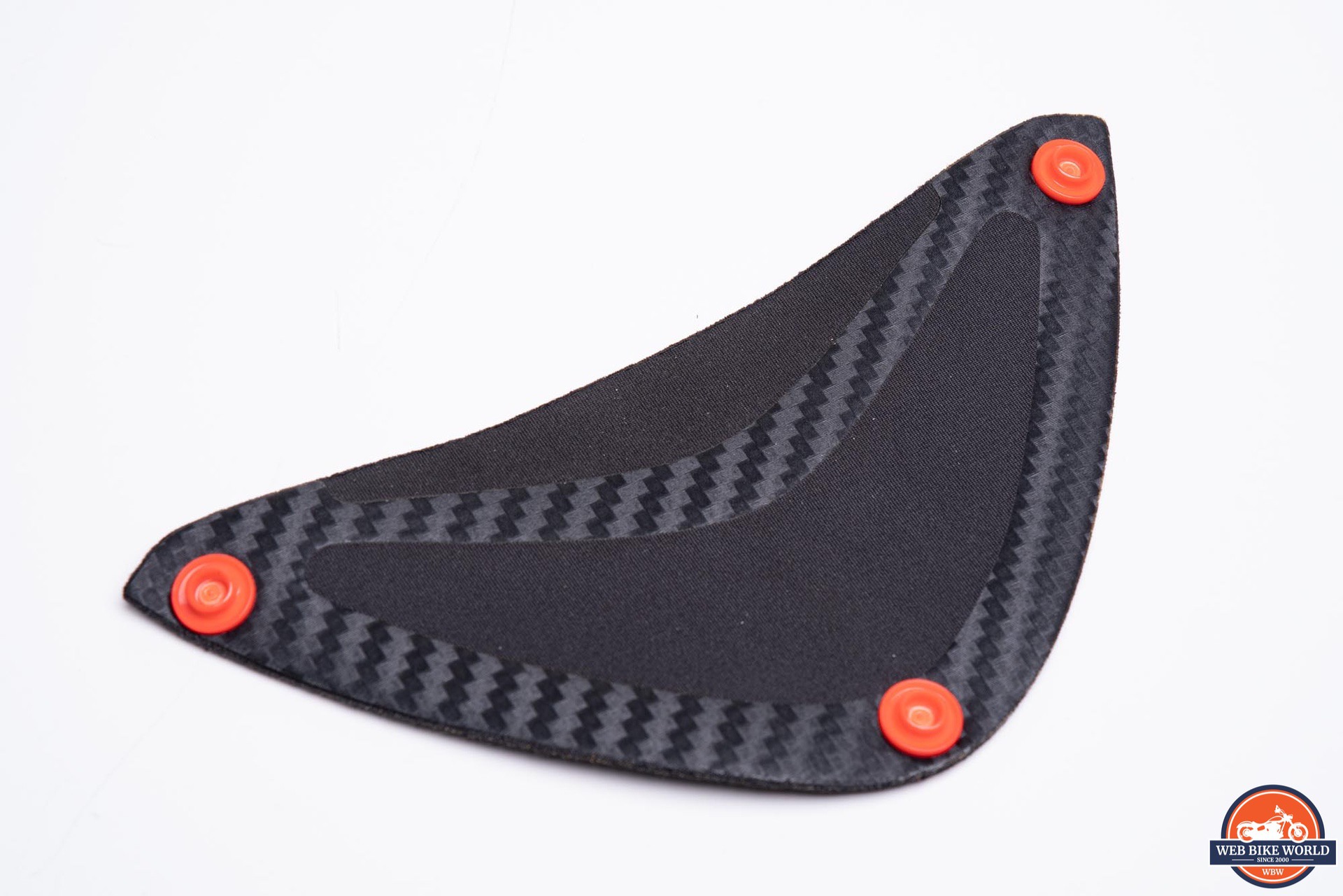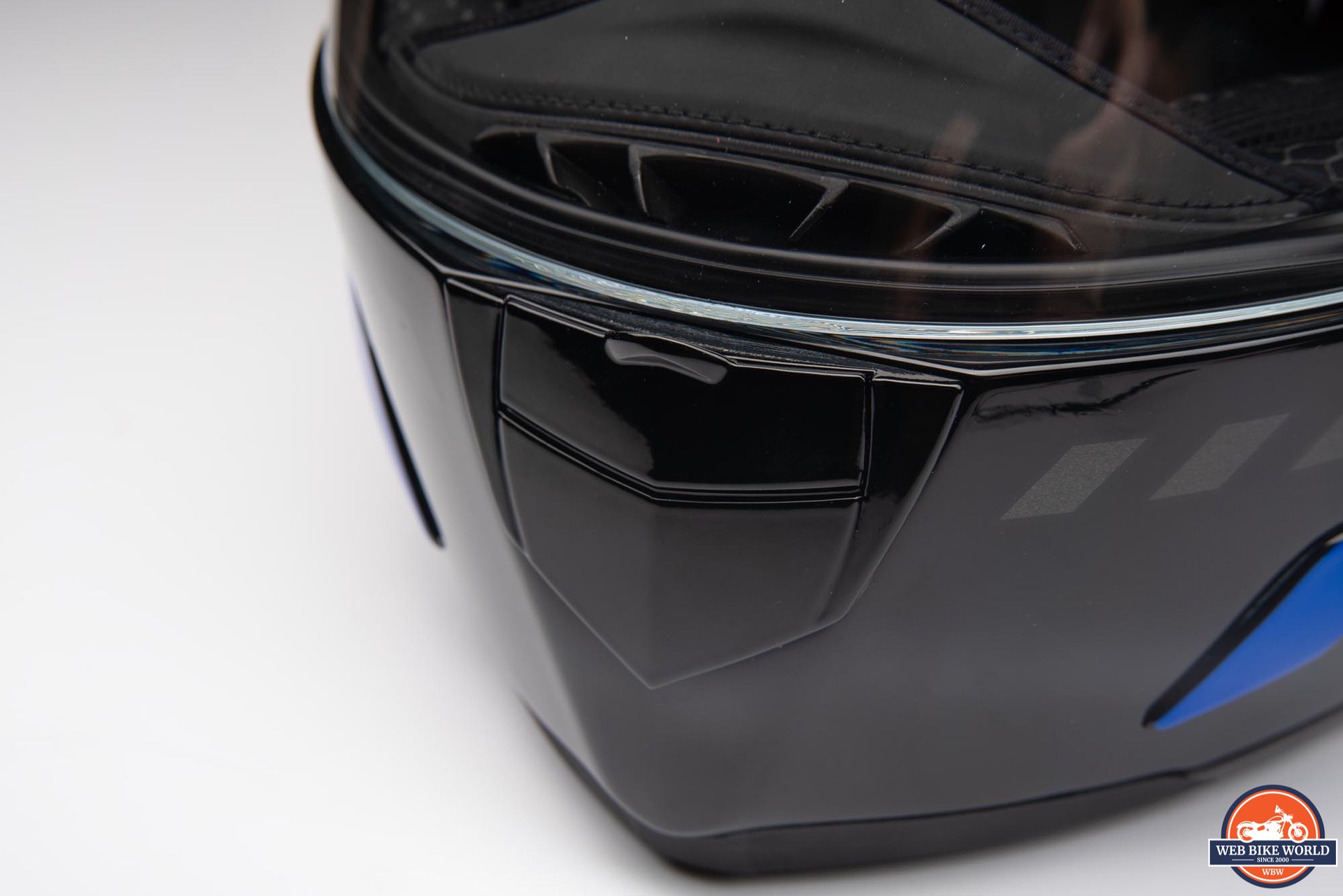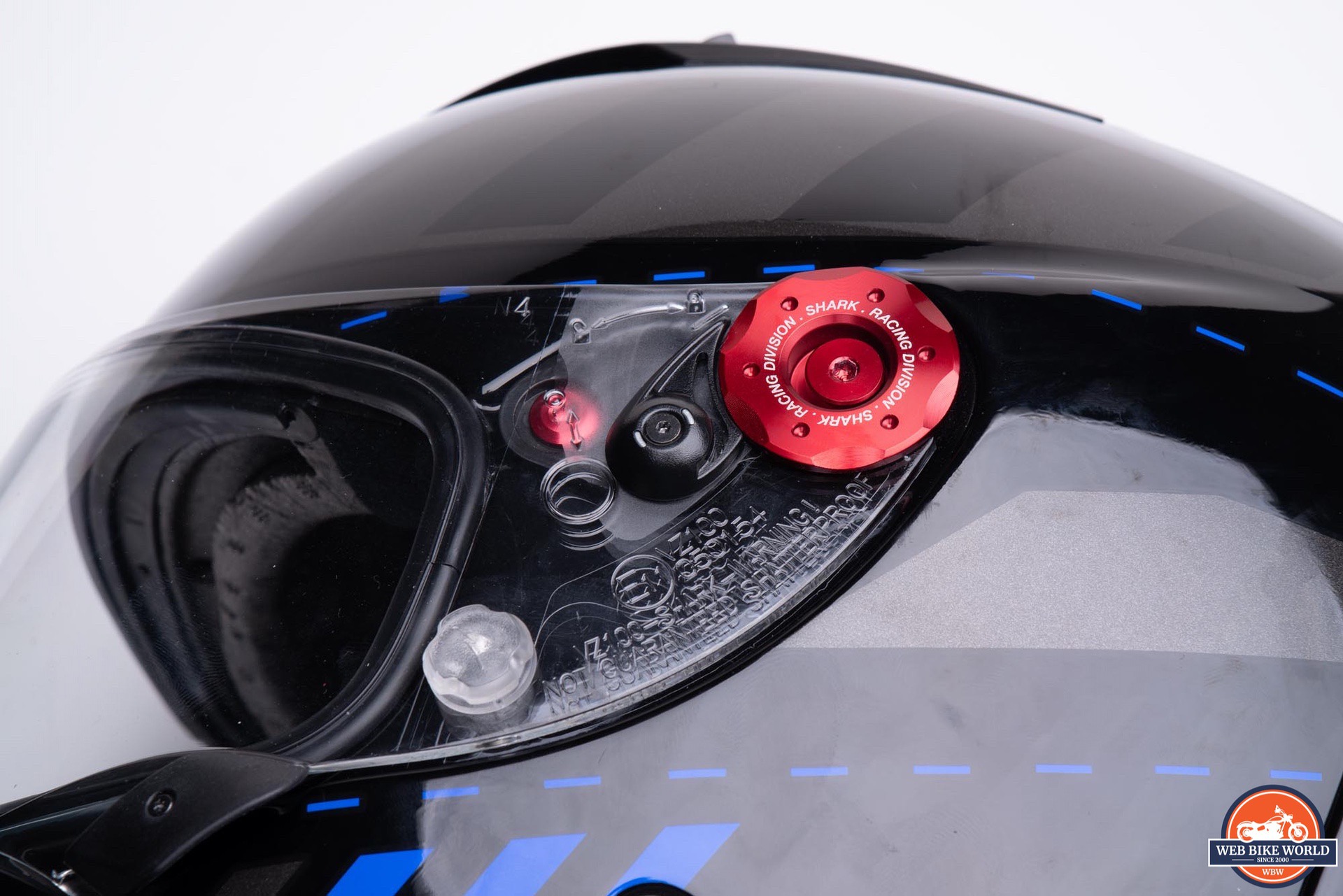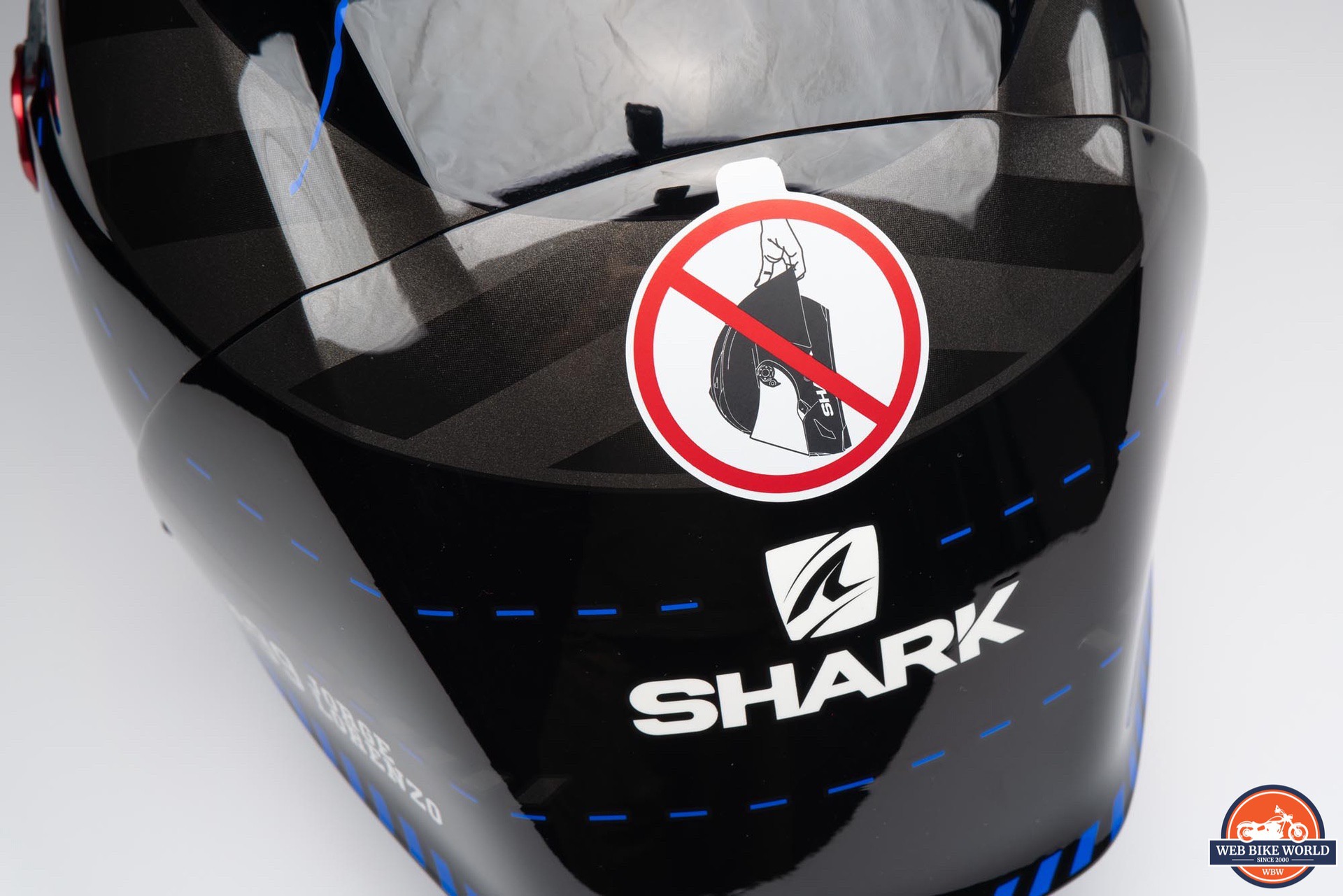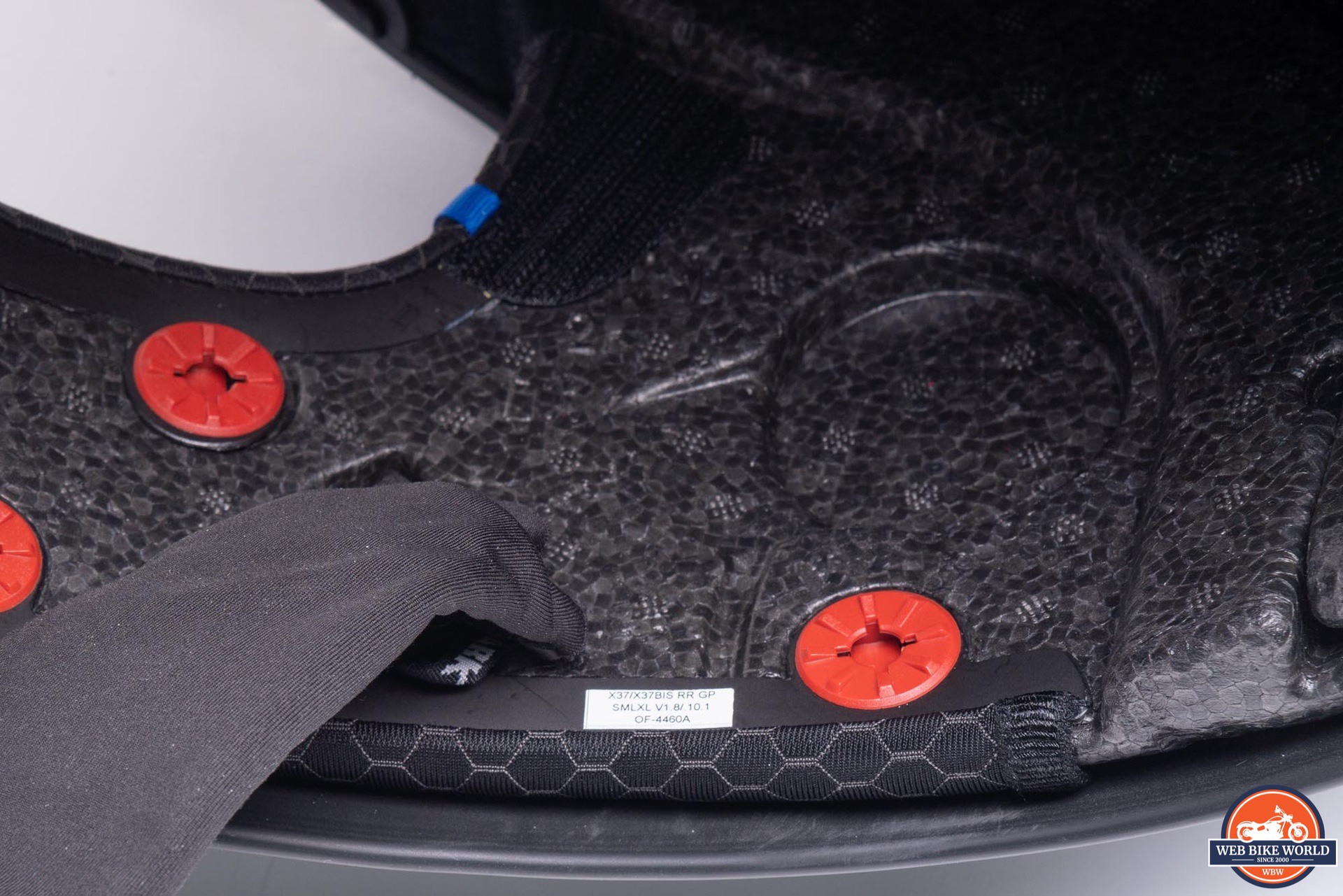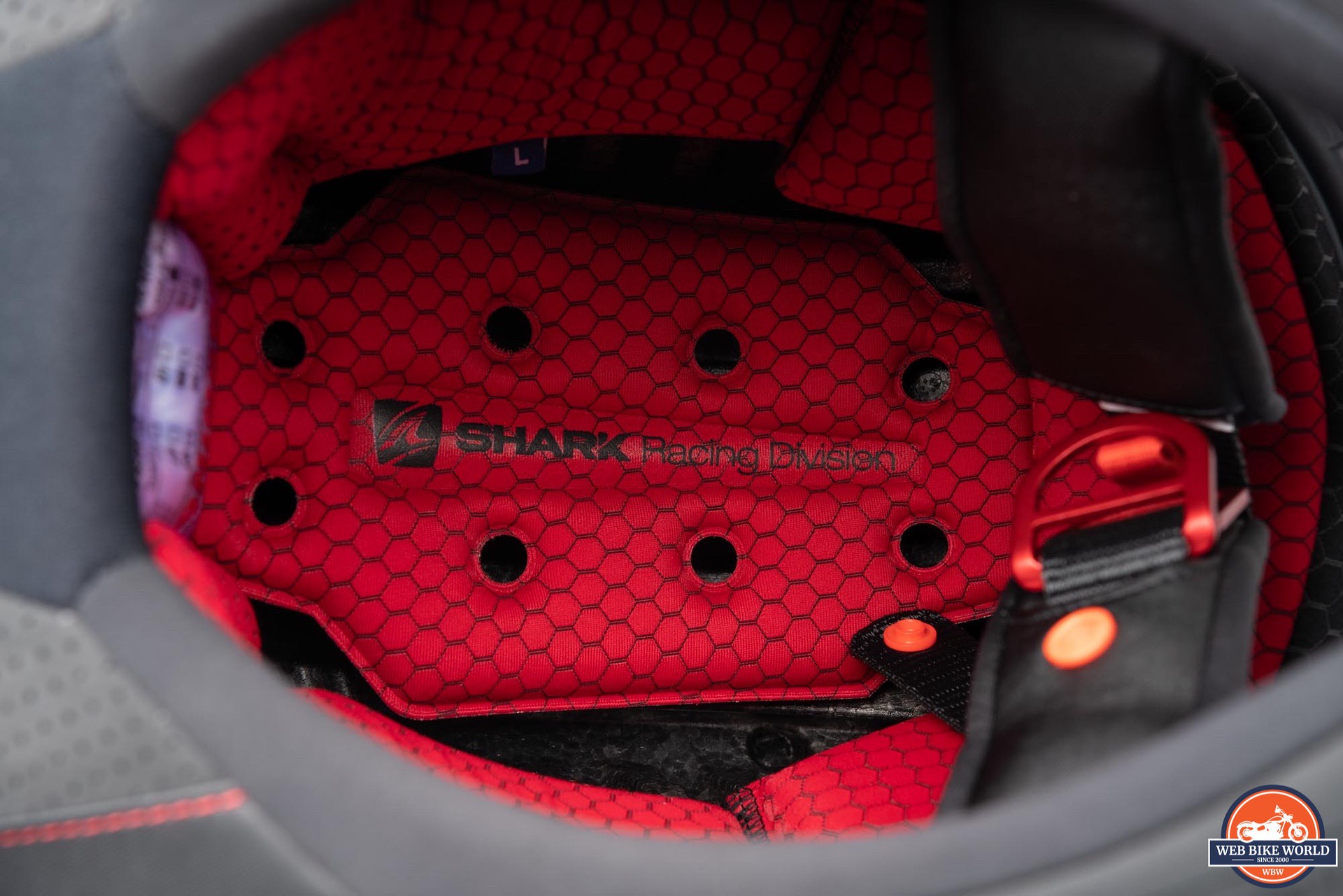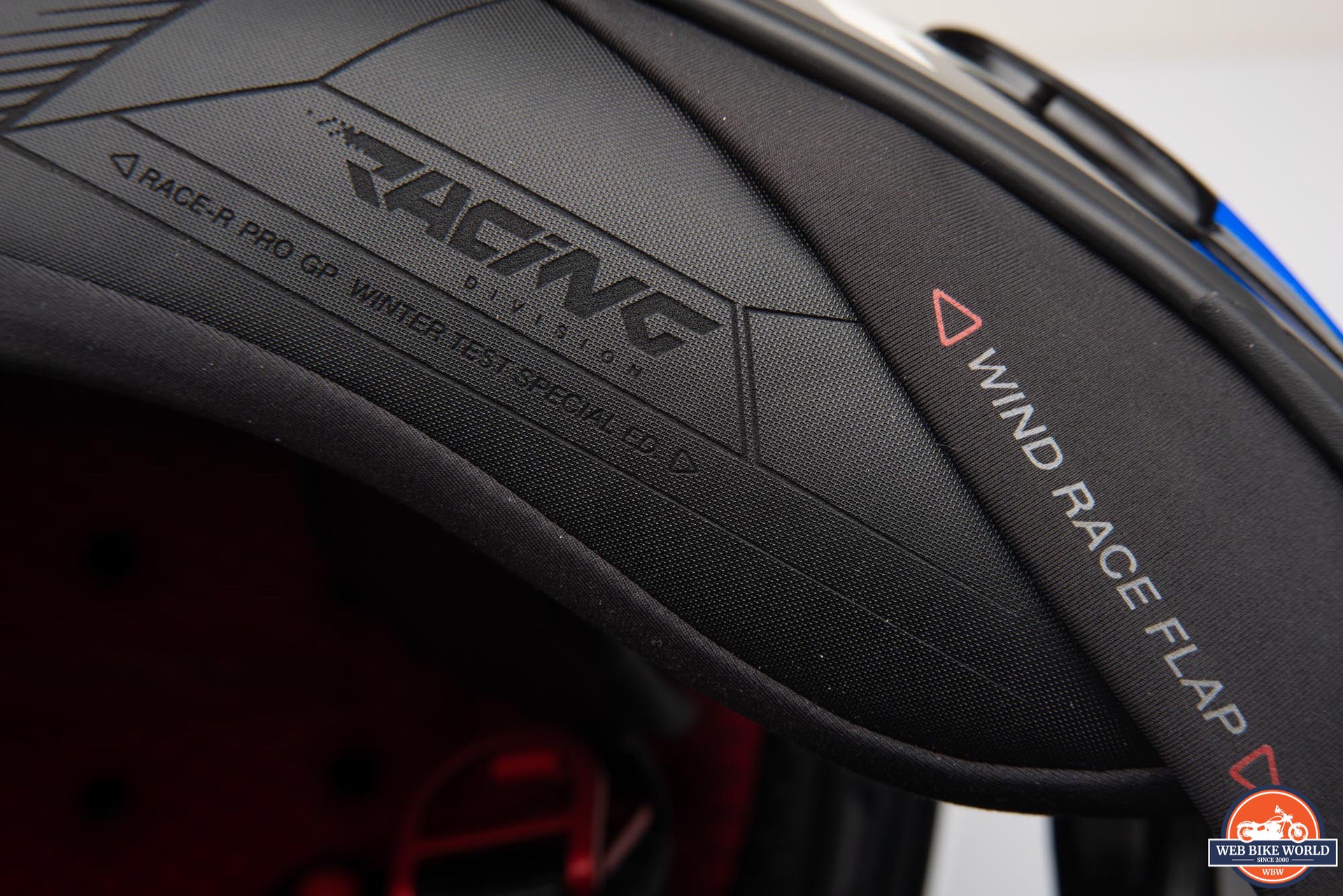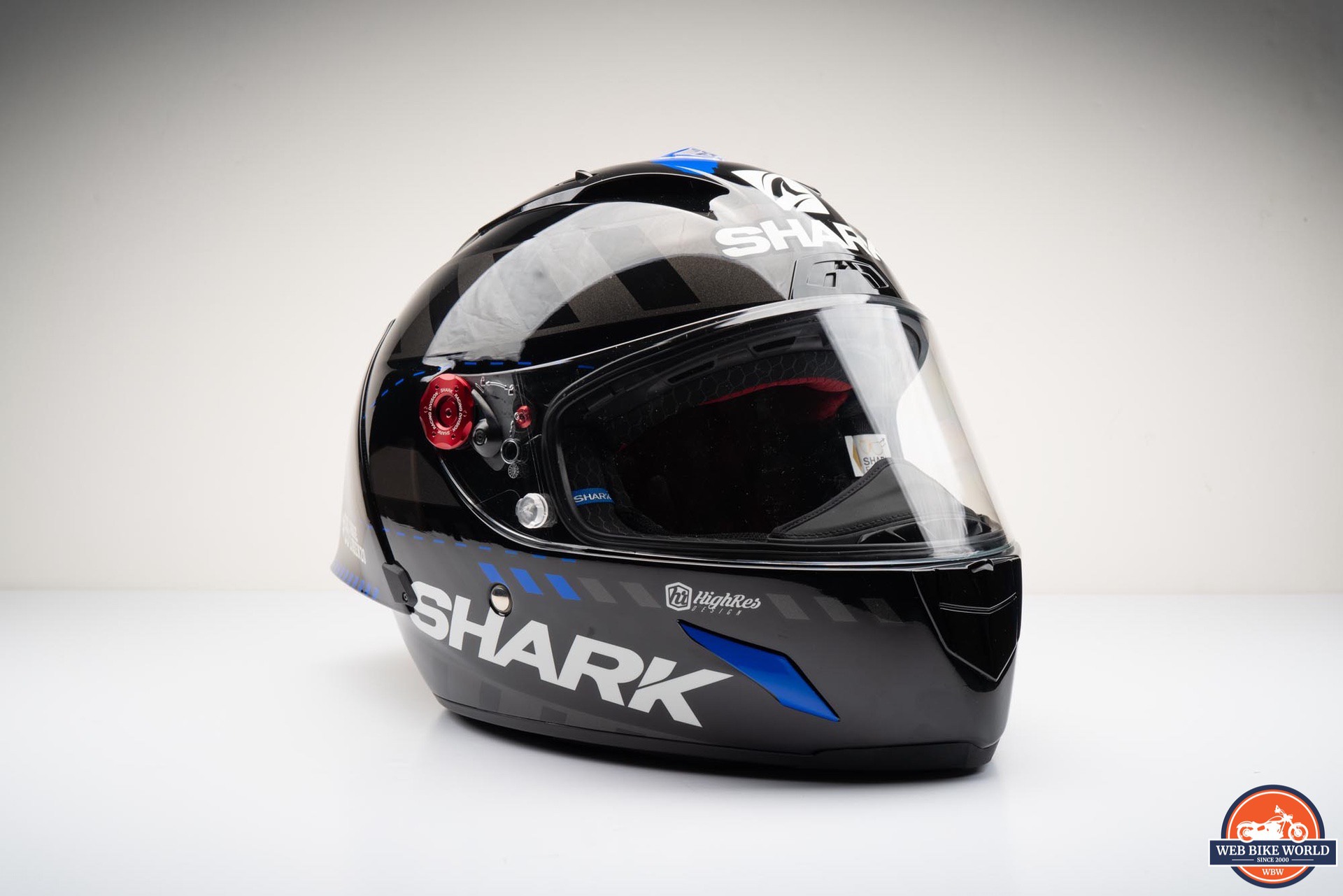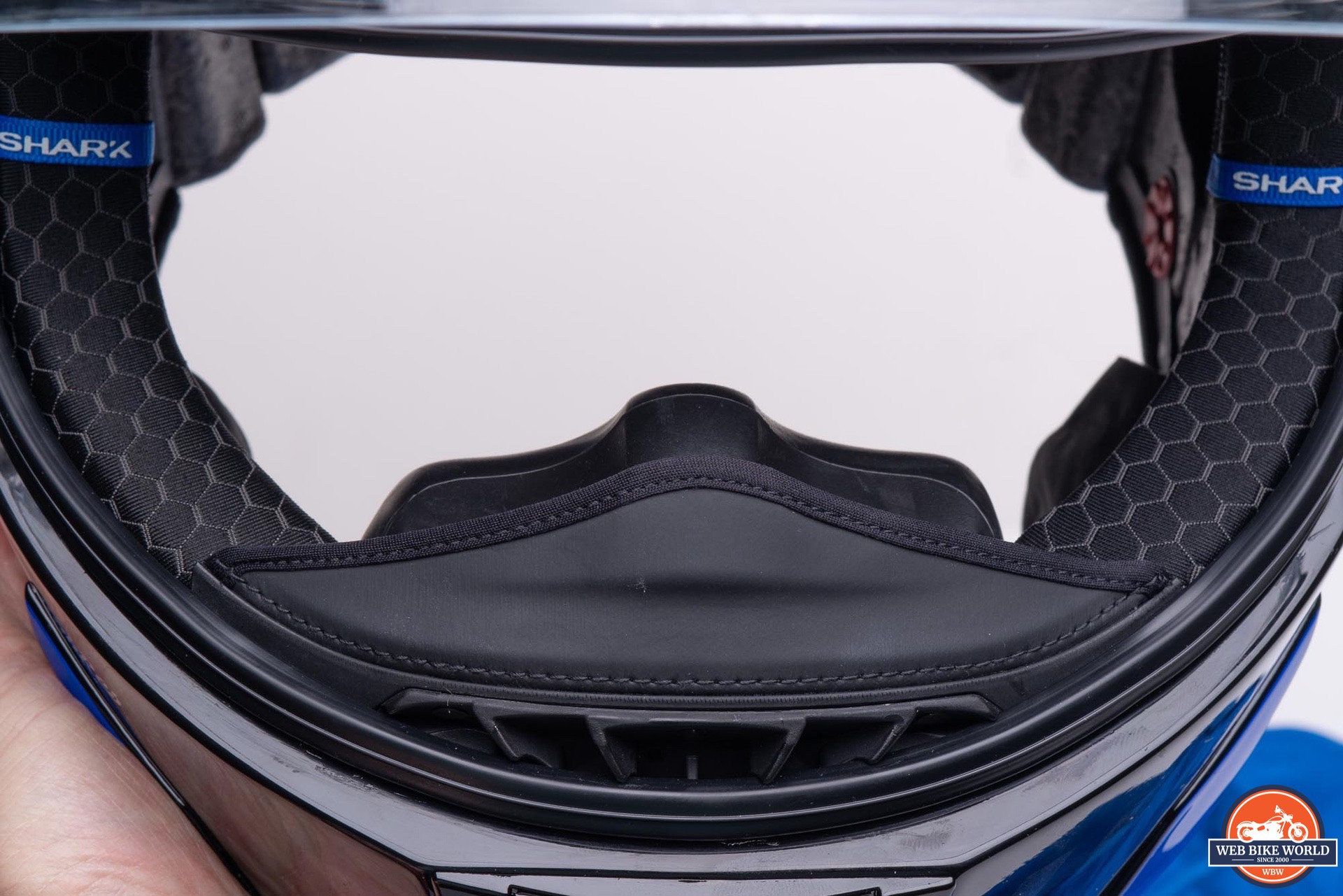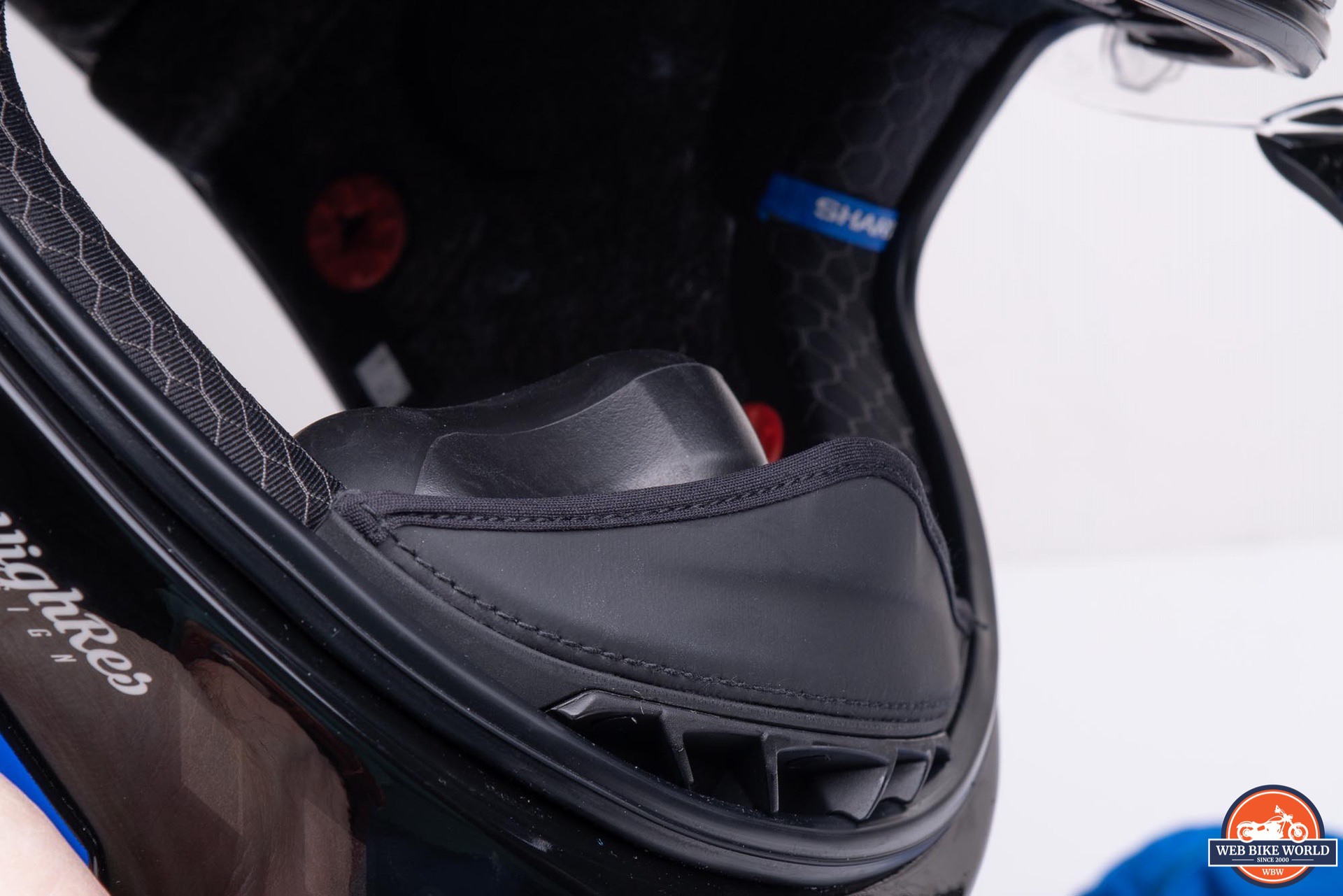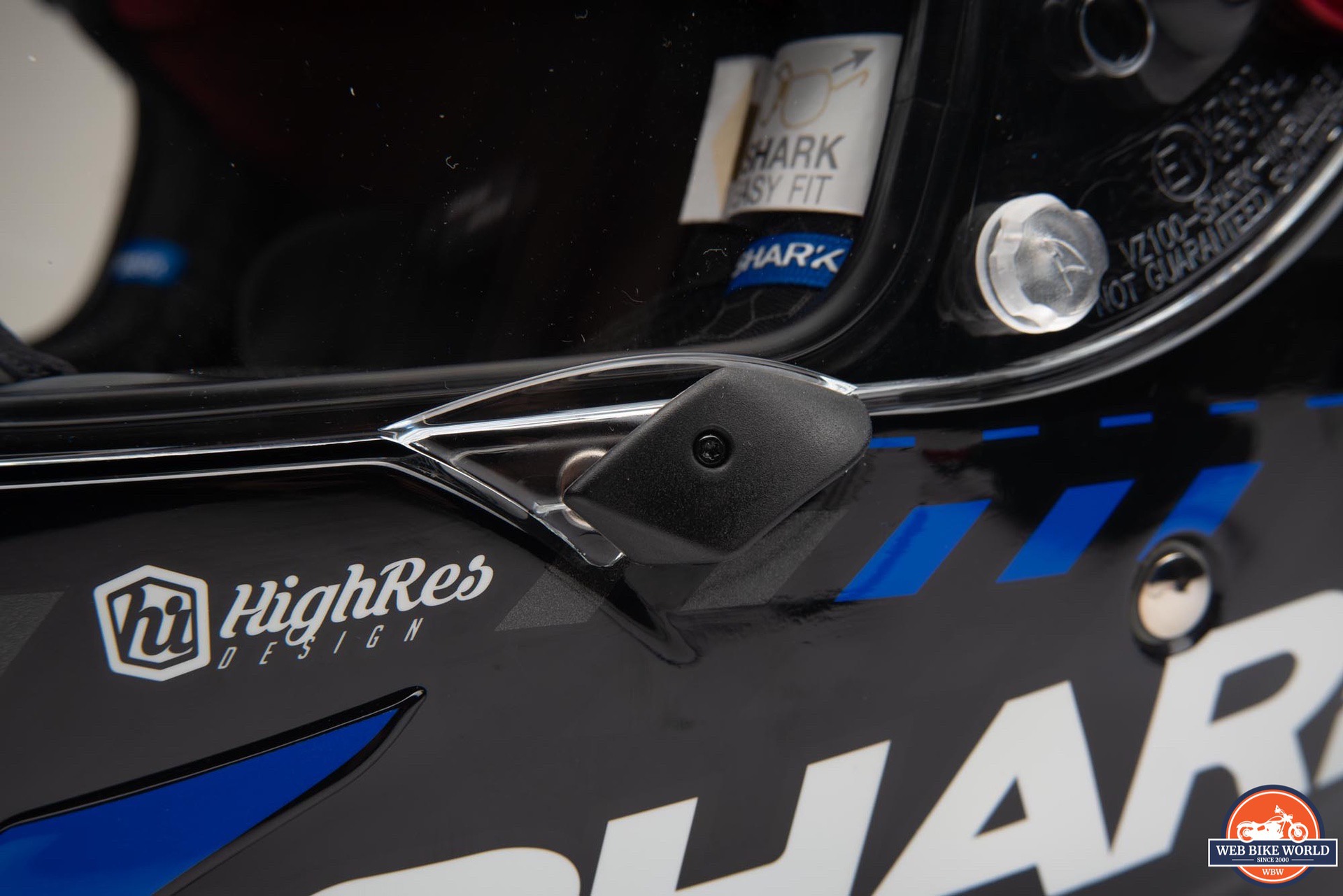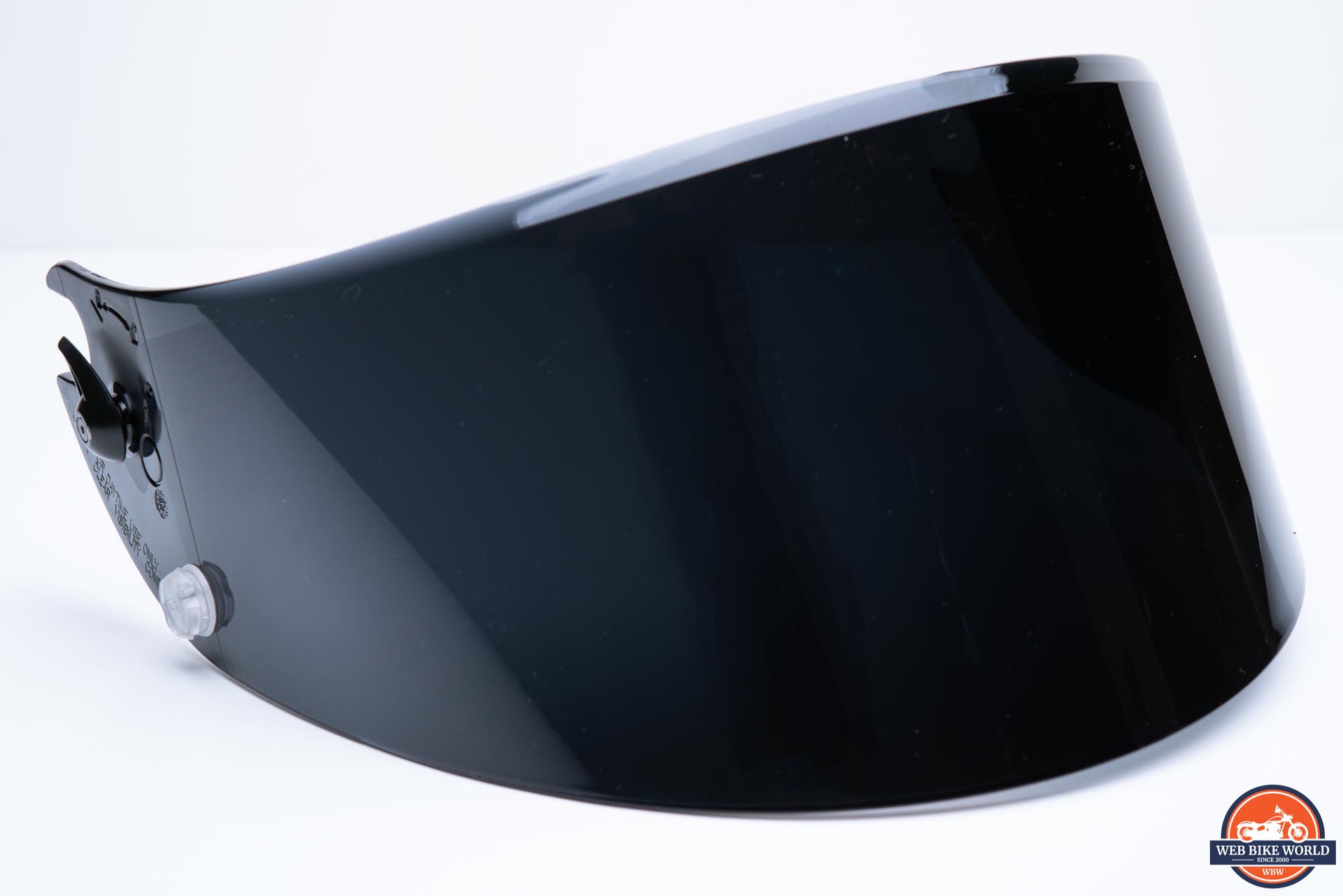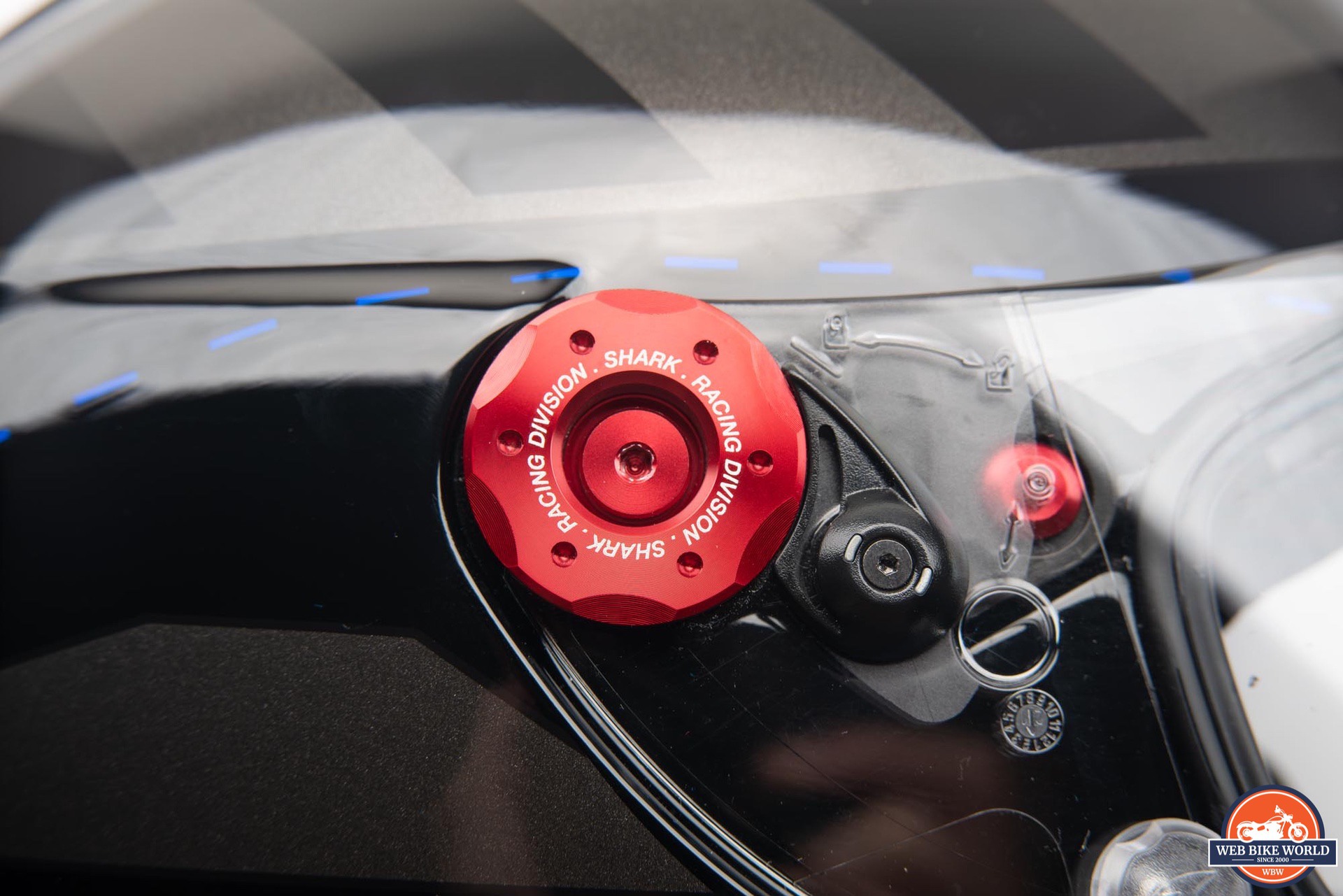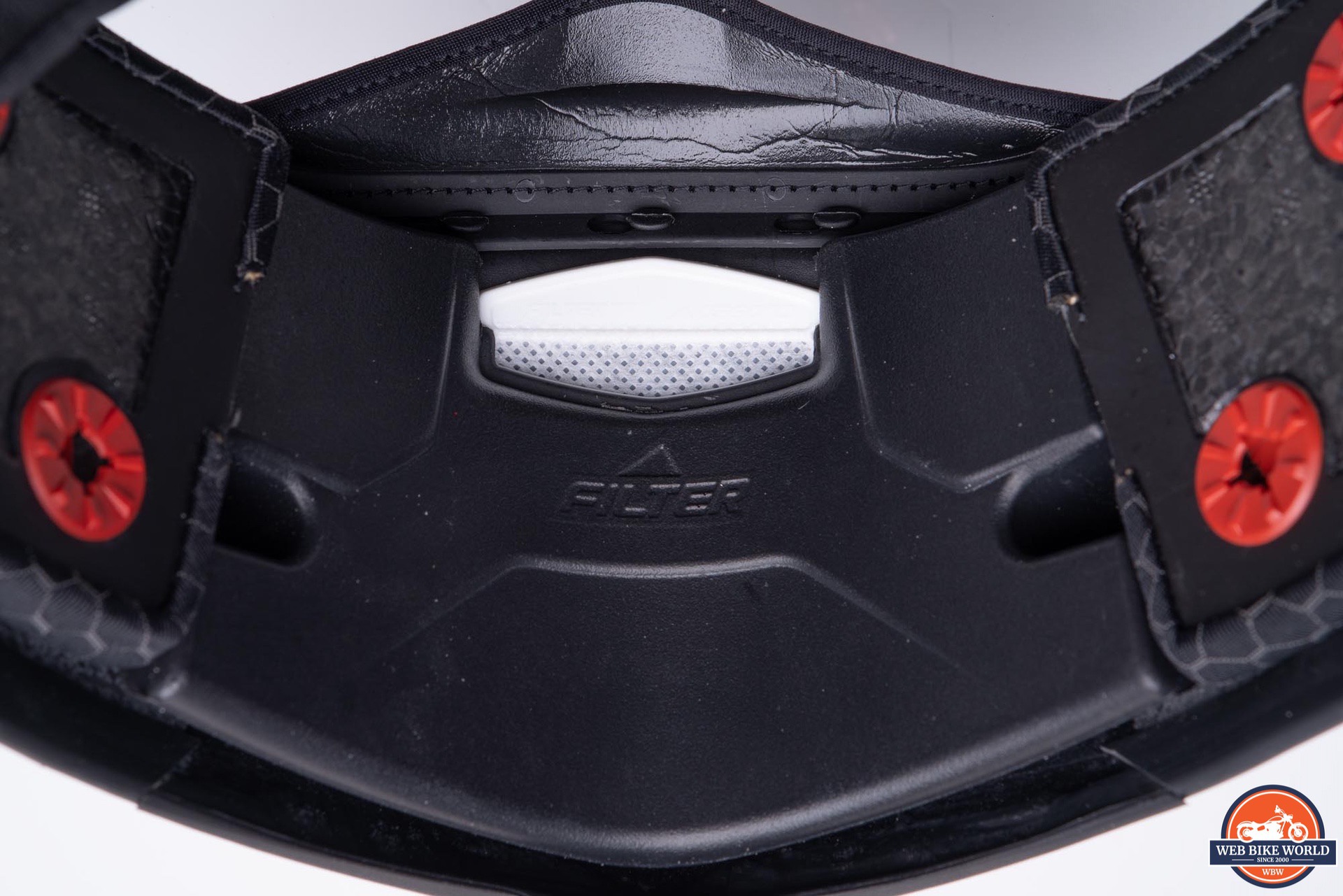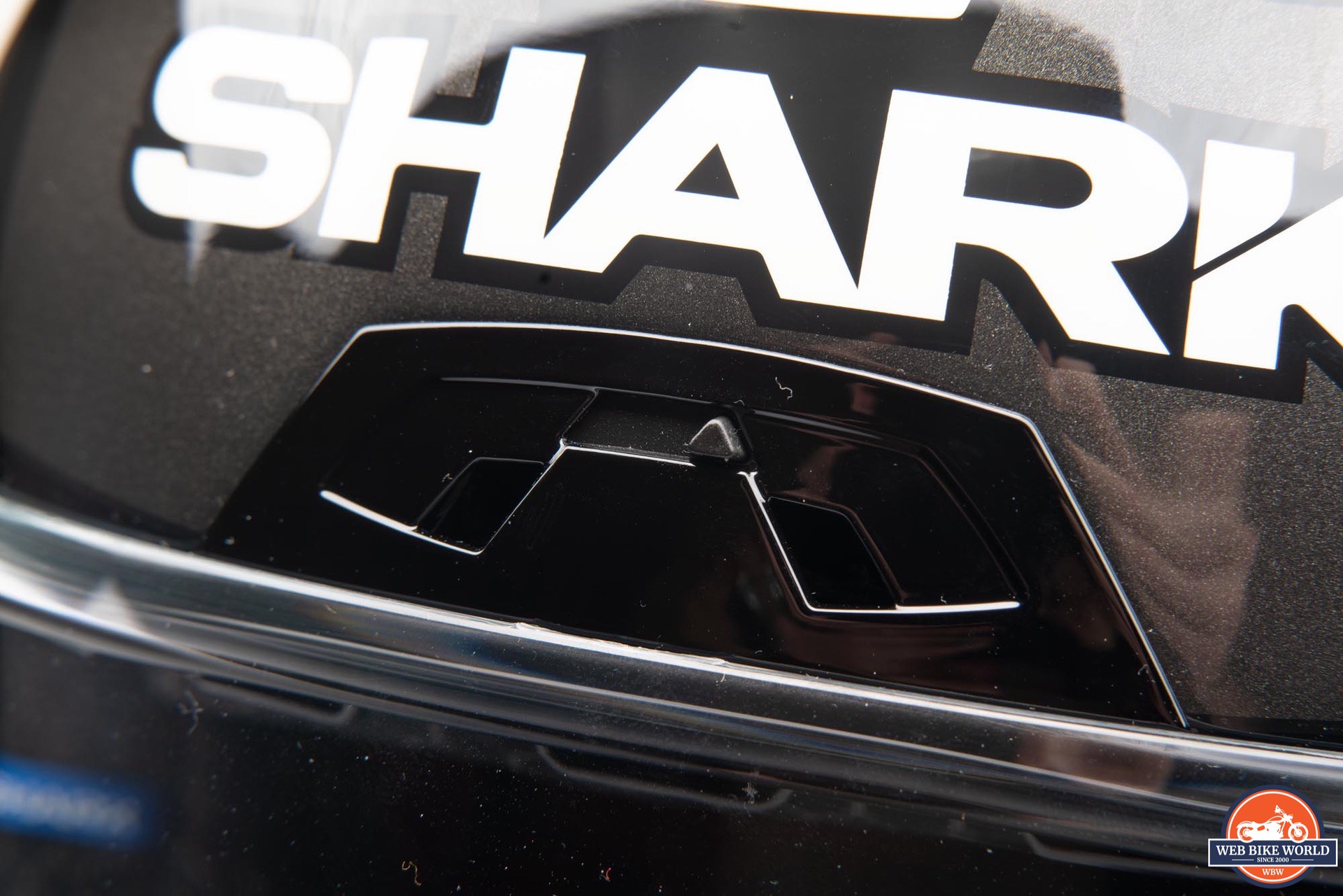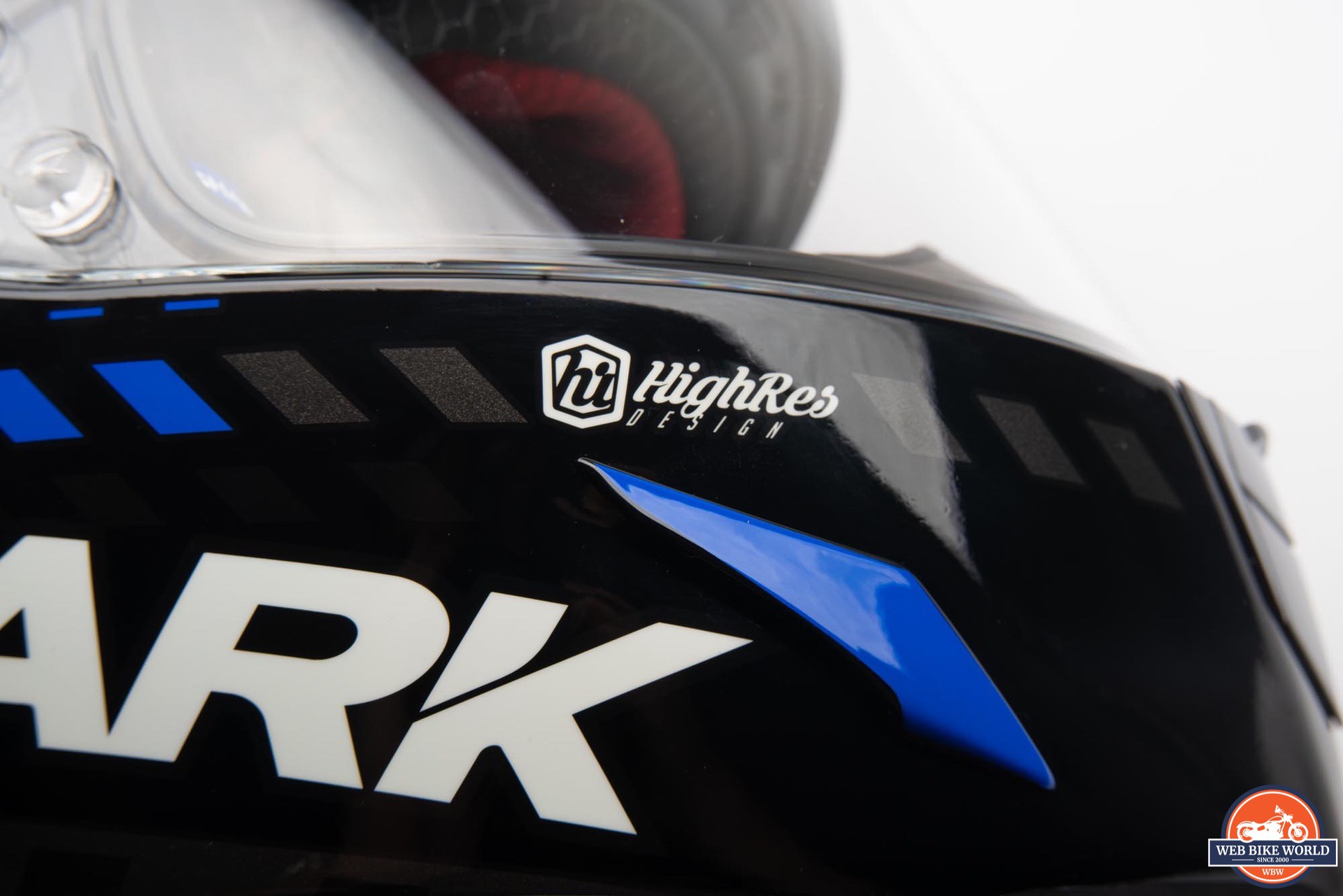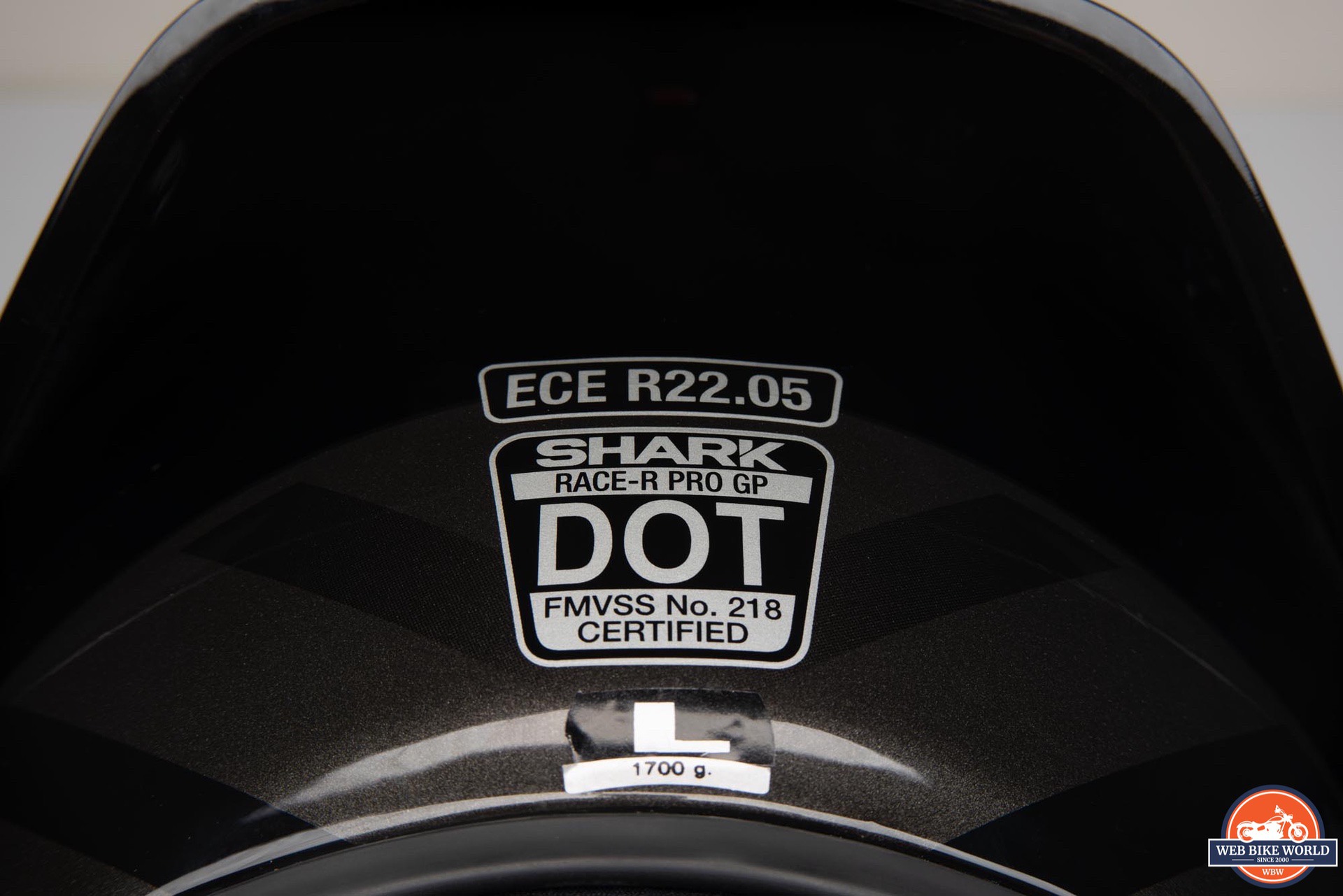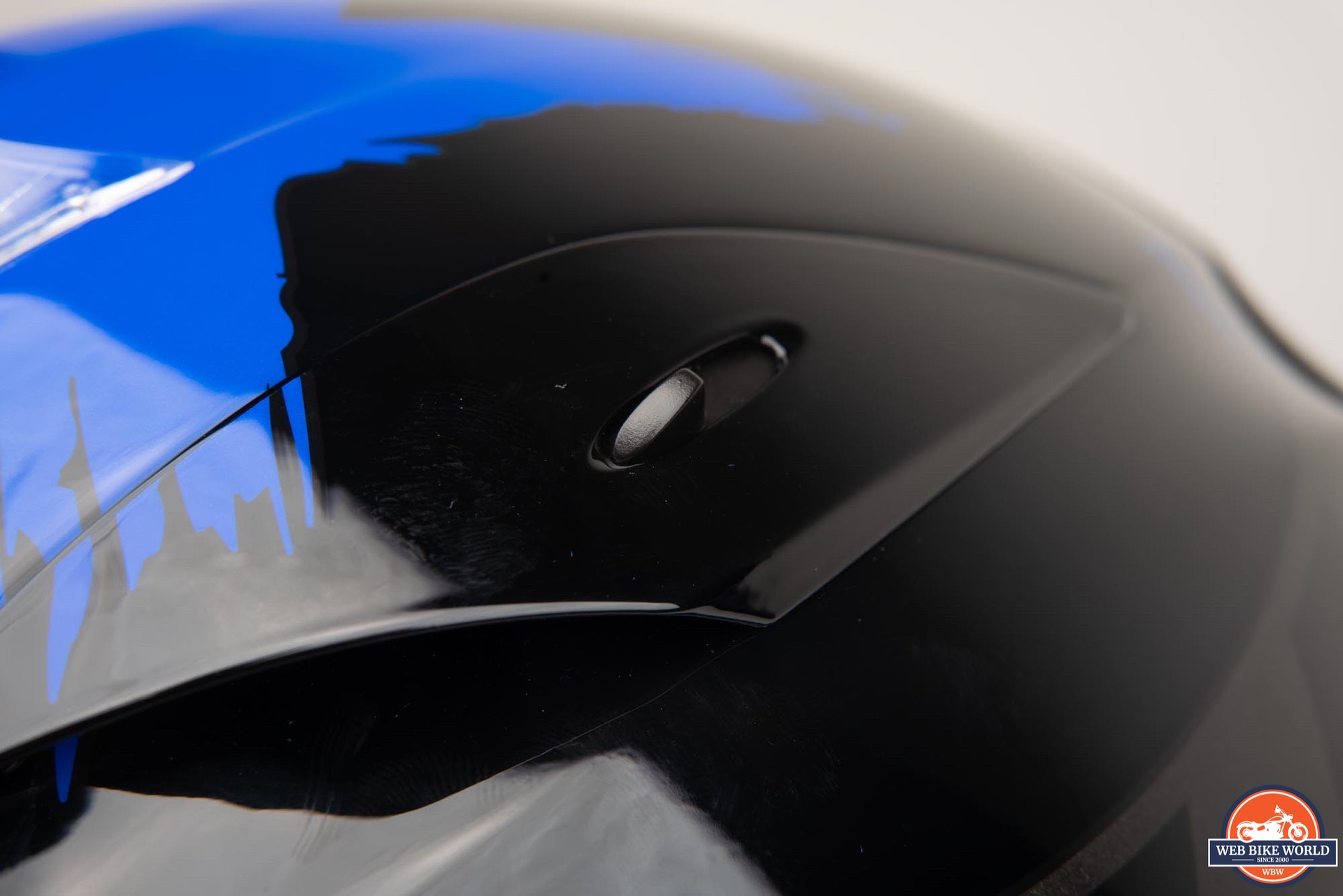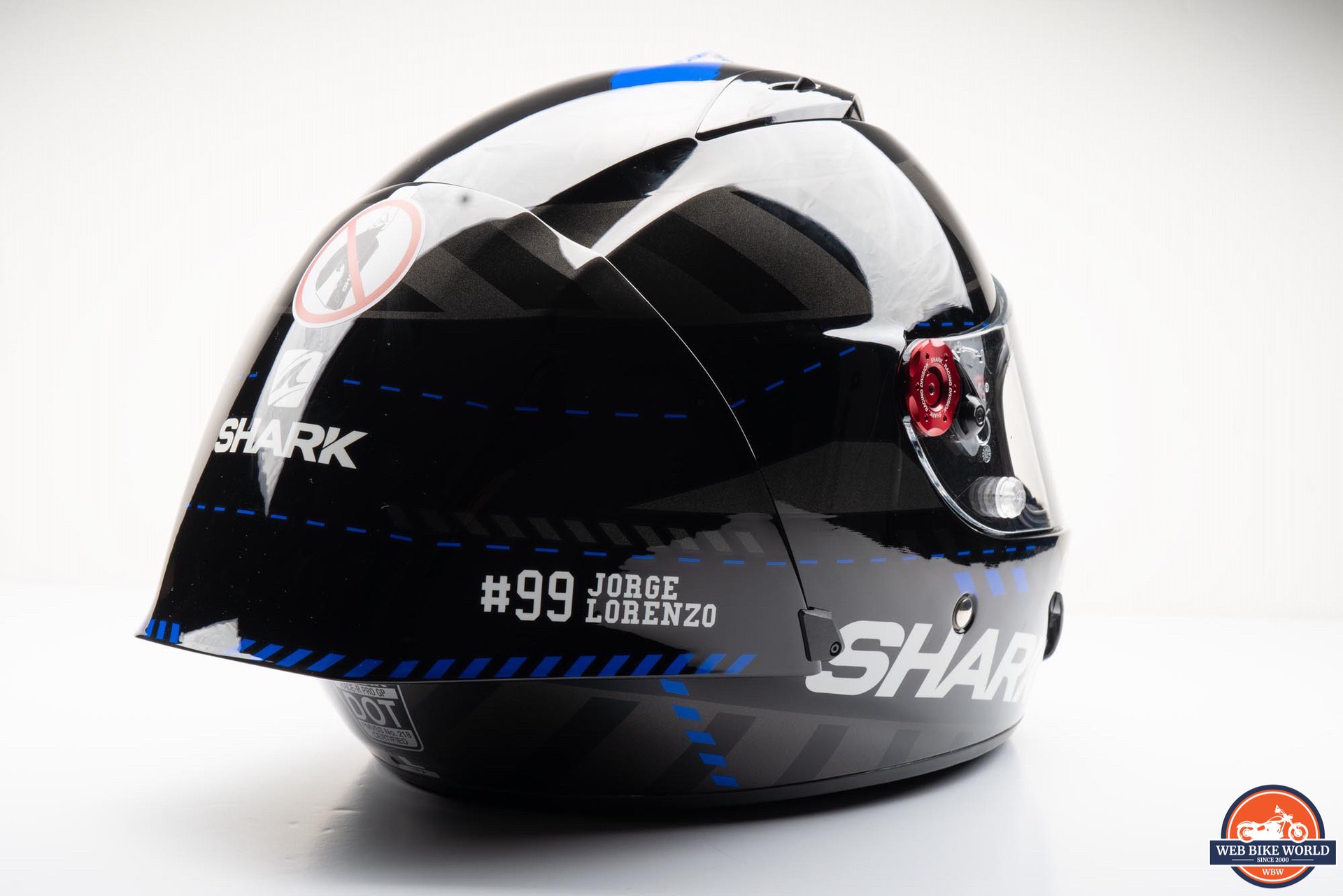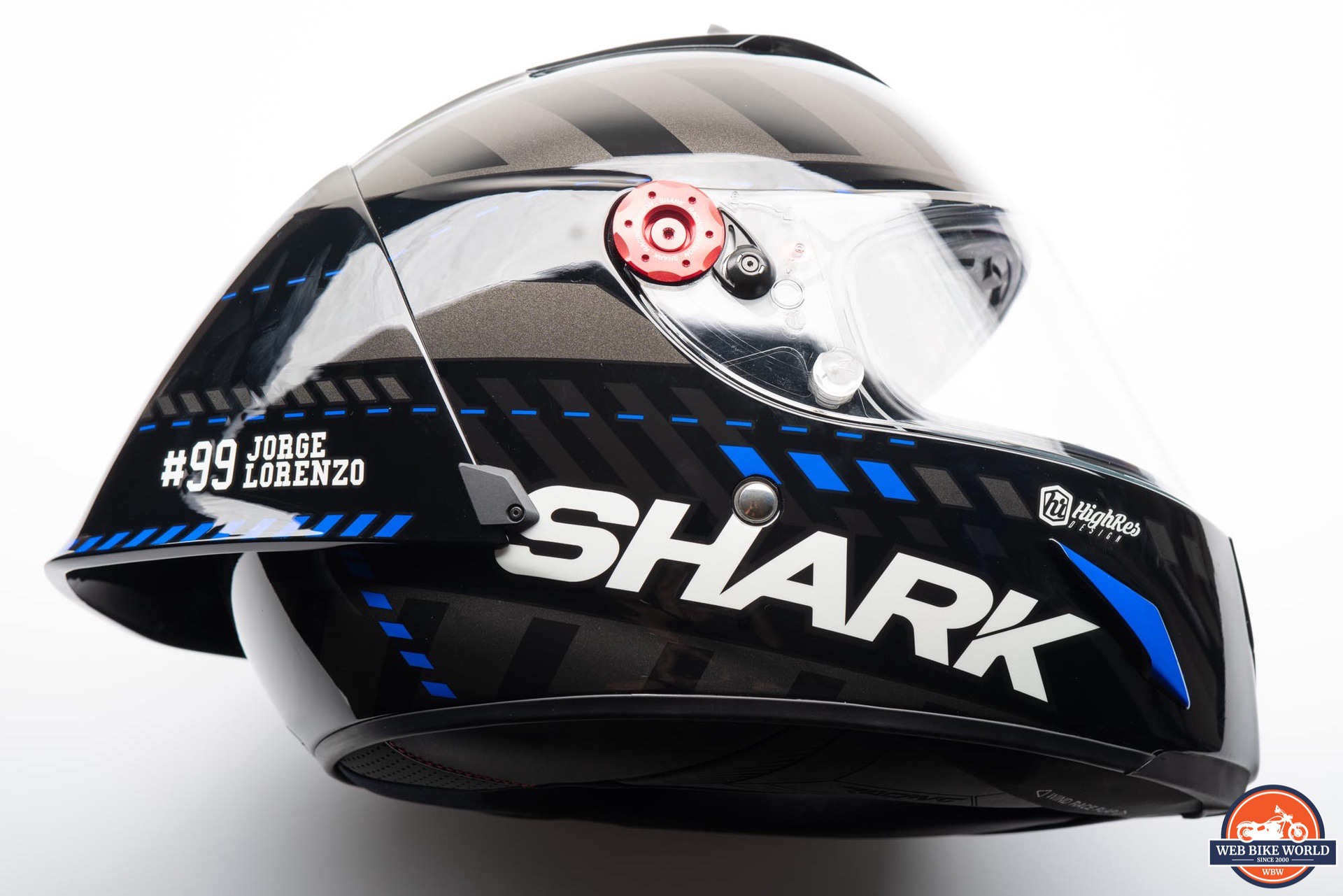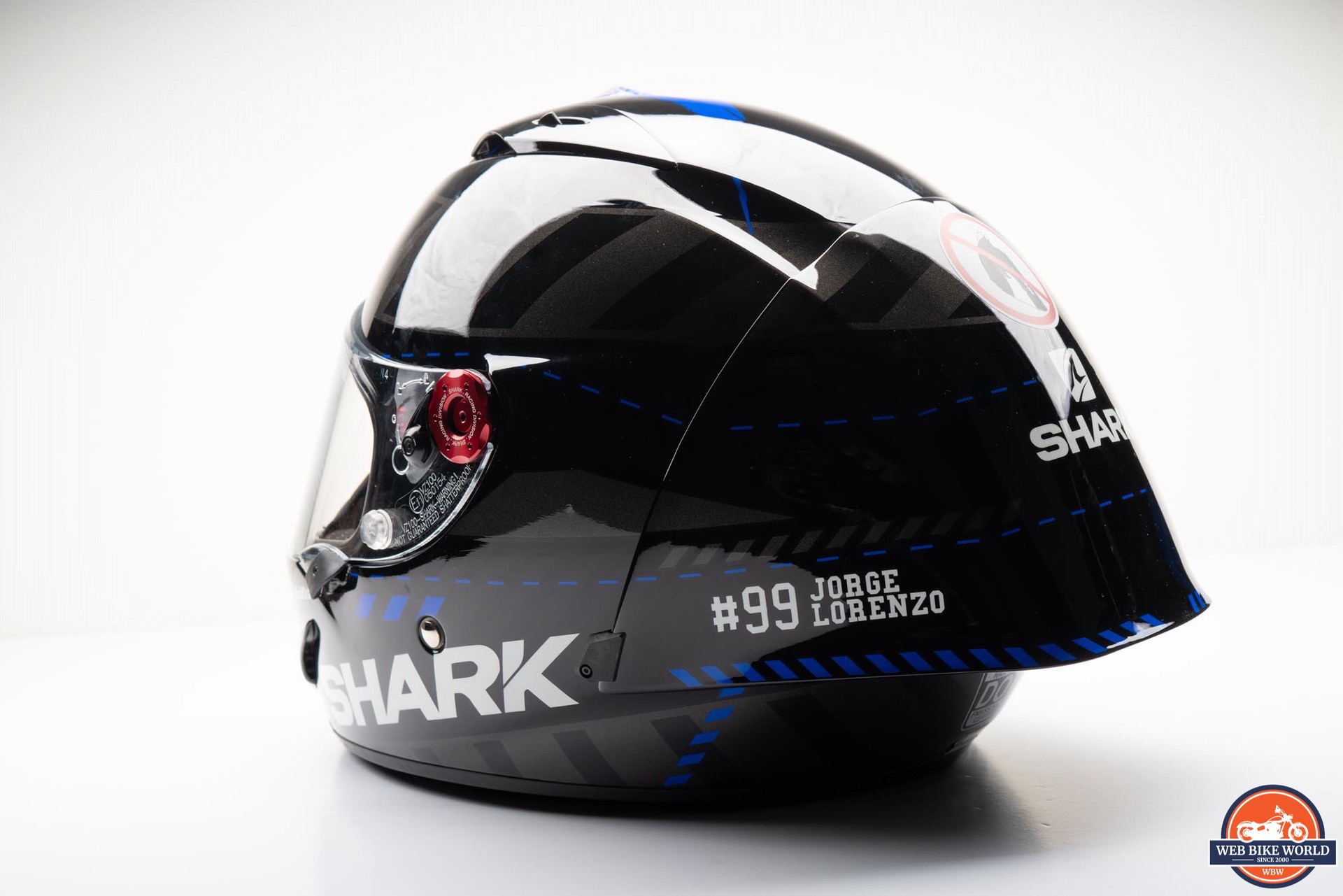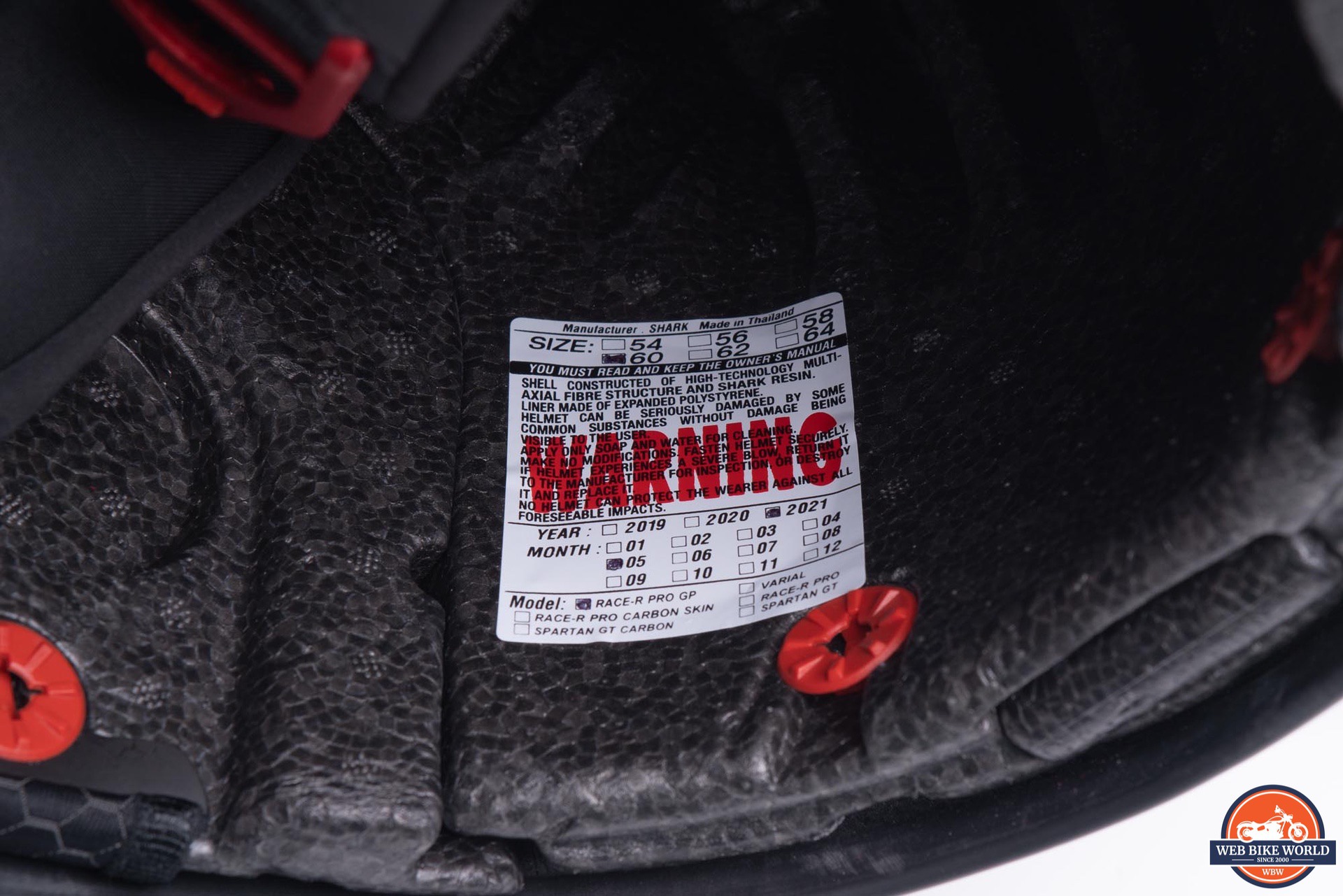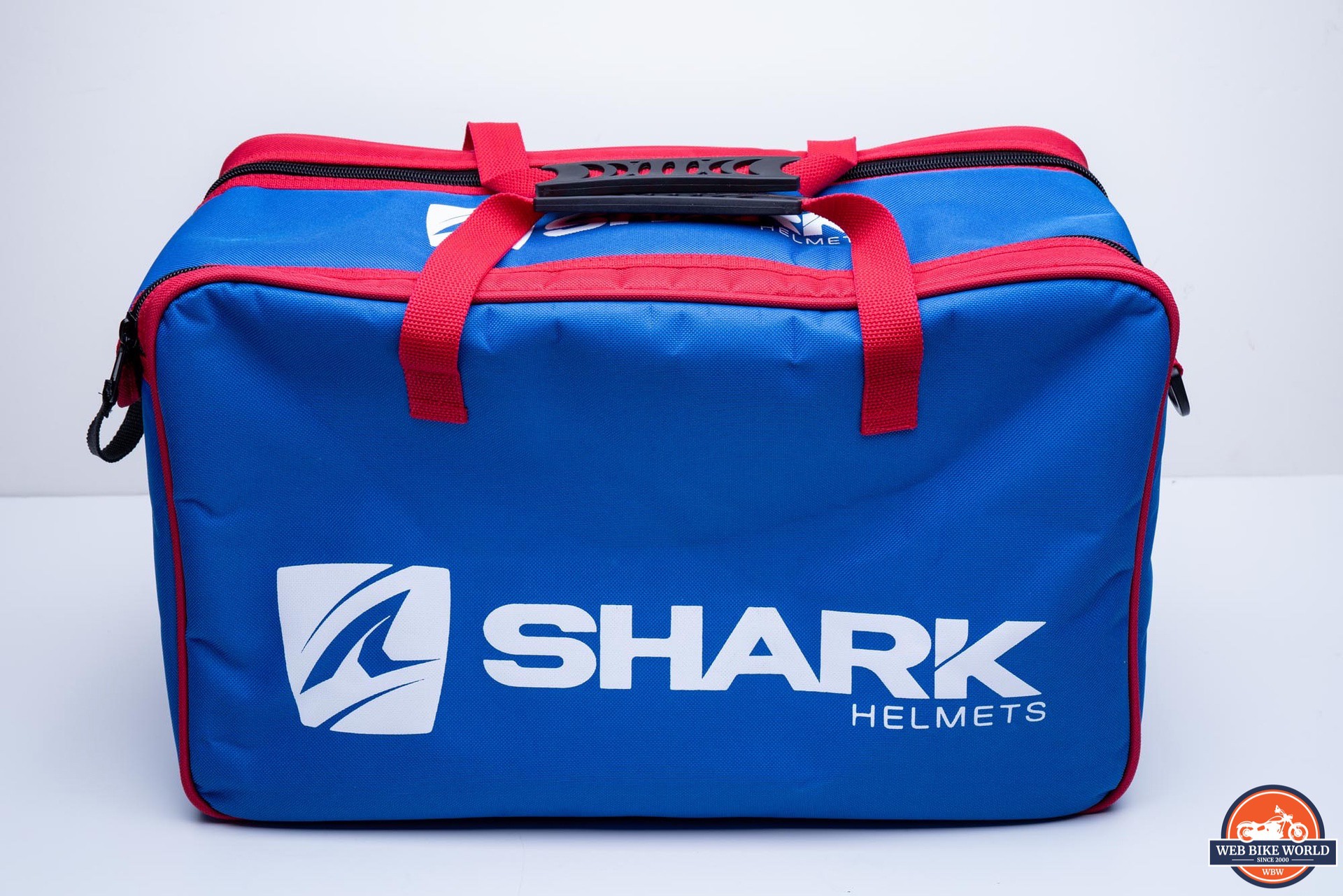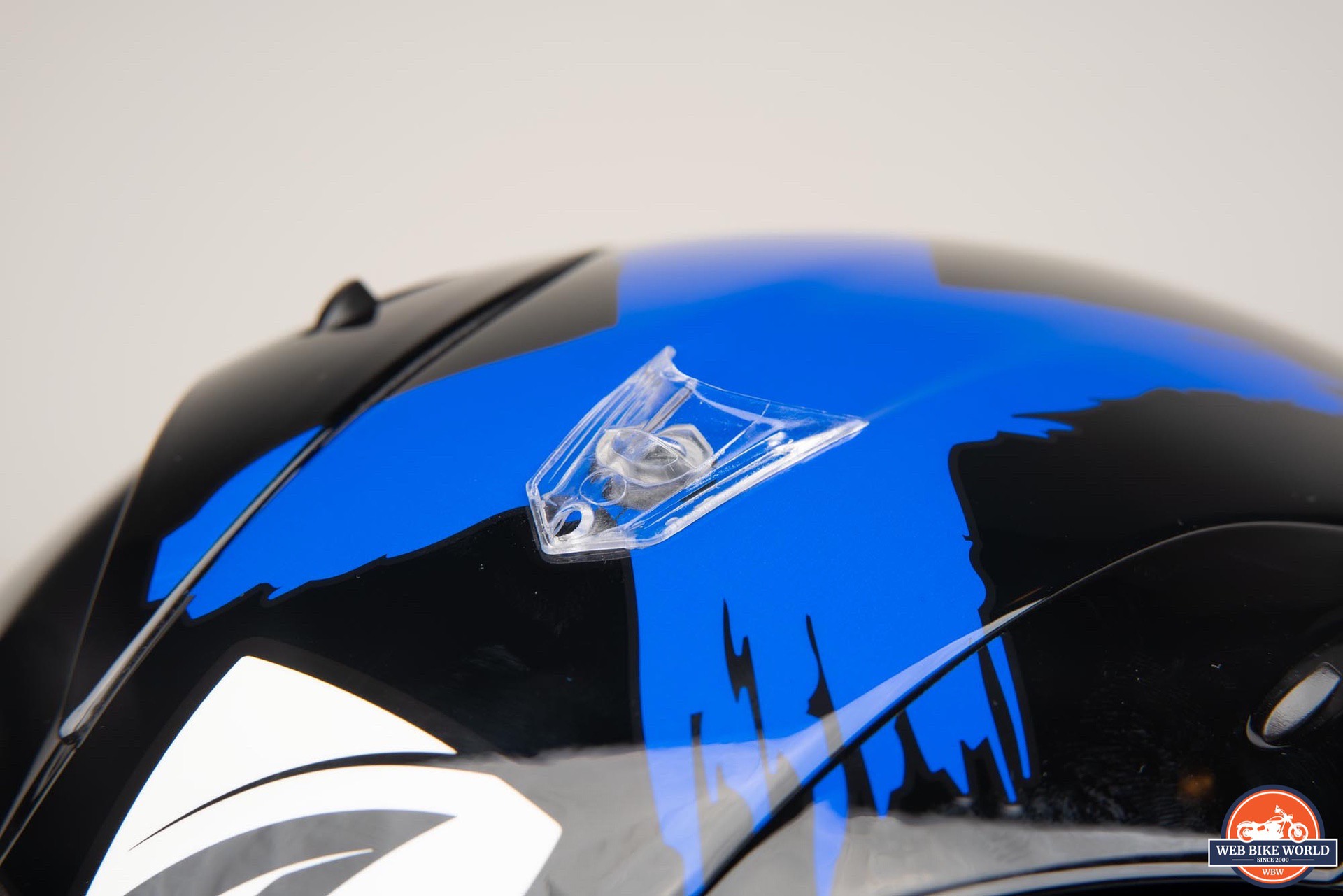Introduction to the Race-R Pro GP Spoiler Lorenzo Winter Test Edition Helmet
Shark’s Race-R Pro helmet has evolved a lot since its introduction in 2011 as aerodynamic design and newly available tech have moved forward. One thing that hasn’t changed is the mission of the Race-R Pro series which is to provide world-class protection and usability for the motorcycle road racer.
This review looks at the latest version of the Race-R Pro, specifically the GP-Spoiler edition, to see what’s hot and not so hot. Without spoiling the ending I can say that the results can vary widely based on the style of motorcycle being ridden.
Who is Shark Helmets?
Shark helmets began life in Marseille, France in 1989 by former professional racers and brothers André and Robert Teston. They made a name for themselves in 1991 when they introduced the XRC Carbon helmet which was voted “Best Helmet of the Year” by German magazine Motorrad.
The original Race-R Pro was released in 2011 sporting a 5 star SHARP rating and the Class 1 optical, 4mm thick visor which are features that have been brought forward into the current version reviewed here.
My own history with Shark helmets began with the S900 and later, the Vision-R GT Carbon, a variant of the Vision-R that wasn’t available here in the United States. This helmet made me a fan of the brand with its combination of comfort, build quality and panoramic view out the visor. It remained in use as my daily use helmet longer than any other helmet I owned and I wish they still made it but hey, this isn’t about me, right?
I’ve reviewed other Shark helmets and even if they didn’t necessarily click all the right boxes for me like the Carbon GT did, the build quality remained impressive, especially their distortion free visors which includes the internal sunshades present in certain models.
So with my expectations set high for Shark’s top level racing helmet, let’s see what’s hot and what’s not in this special edition version of their Race-R Pro GP Spoiler helmet.
The Race-R Pro GP Spoiler Lorenzo Winter Test Edition
The current version of the Race-R Pro has several updates when compared to the original version, but the most noticeable change is the shorter vertical height of the visor. The original had a very tall visor like the Vision-R mentioned earlier.
I don’t know why this was done, but my guess would be that others had the same issue with the extra height that I experienced with the Vision-R. The tall visor opening made it difficult to block the sun at certain times of day, which could be a serious impediment when in a competitive setting or on the street.
There are two major versions of the Race-R Pro with the standard Race-R Pro and the Racer-R Pro GP Spoiler version, with the major difference here being the large spoiler on the back of the aptly named GP Spoiler one.
This version is further available in Winter Test Editions like the Lorenzo version reviewed here. The Lorenzo variant is available in Black/Grey/Red and Black/Gray/Blue with blue being the one that arrived at my door.
All of the Race-R Pro helmets use two shell sizes with the small shell used for XS through M sizes and the large shell used for L and XL sizes. This keeps the helmet from having the “space helmet” look for smaller sizes and with only the largest size being XL, the two shells seem to be enough.
I’ll get into sizing later but I want to note that the sizes do fit very snug, so if you need an XXL I doubt one can squeeze into an XL here.
Included with the the Race-R Pro GP Spoiler Lorenzo Winter Test Edition (referred to as simply Race-R Pro GP from here on) is a dark smoke visor***, an add on breath guard, a small allen wrench, a helmet bag, and a Shark Racing Division bag. The bag can hold the helmet plus the extra accessories easily and is the same as the ones provided to professional racers using Race-R Pro helmets.
***the dark smoke visor is for track use only
Aesthetics of the Race-R Pro GP Spoiler Lorenzo Winter Test Edition Helmet
The black base paint appears to be very well laid down and feels very smooth. The graphics overlaid on the paint are likewise very well done and after very close inspection I couldn’t find any flawed areas or dust under the clear coat. The clear coat finish is very glossy and smooth with the only distortions coming from the edges of the decals underneath.
While the helmet appears mostly black, there are several dark gray block patterns around the helmet along with some blue accents and a large, blue “X” graphic on the top. On each side of the spoiler is a “#99 JORGE LORENZO” decal in white along with several SHARK logos around the rest of the helmet.
The graphics are subtle with the SHARK logos being the most noticeable. For the street one might prefer a helmet with some more visibility, but being designed for the track, I think this is just fine.
Overall the finish is excellent—as one would expect for a helmet in this price range.
Race-R Pro GP Spoiler Lorenzo Winter Test Edition Helmet Build Quality
The shell of the helmet is constructed using a Carbon/Aramid fiber material for a balance of light weight and strength. Compared to other full carbon fiber helmets I’ve handled, the shell has more flex, which can mean better resistance to cracking under an impact. A flexible shell can do a better job at absorbing impact forces than a shell with more rigid material.
The rear spoiler is very thin, and Shark makes a point to notify the wearer that one shouldn’t pick up the helmet and carry it by the spoiler. This warning is included in the manual and also via a large, removable sticker on the spoiler. The spoiler is designed to easily break away from the helmet under impact to reduce any secondary shocks, so one should be careful to avoid putting stress on it.
Helmet Interior
The expanded polystyrene (EPS) interior has several very deep channels in the upper area to facilitate good airflow around the top of the head. It occurs to me that these channels might also act as a softer “crush zone” than the outer solid portions of the EPS. Perhaps this is by design to create a two stage impact absorbing system? It seems like this would be a by-product of this design whether that was the purpose or not.
The liner and cheek pads are all removable by use of snaps, hook and loop fastener, and slots/tabs. In addition to the usual cheek pad/upper liner, the Race-R Pro uses a full circumference lower neck roll, which slots into the underside of the shell. This helps create a more snug fit around the helmet opening and can also improve noise reduction.
All of the pieces remove easily, but the snaps are noticeably more robust than what I have found in most other helmets. Snapping them back into place requires more force than I’m used to, but there is a very satisfying “click” when they engage.
Chin Strap
The helmet uses a standard double D-ring fastening system with the metal rings composed of titanium. While this is a nice touch and the rings are very nicely finished in red, use of titanium here seems a bit of overkill (but I suppose it doesn’t hurt either).
Please note that the strap end fastens with the standard plastic snap instead of the magnetic chin strap end called out on the Shark USA website. I’m told by Shark that this applies to the ECE only model and DOT/ECE versions have the snap in place on this helmet. It’s a small change, but Shark (and Revzilla/Cycle Gear) might want to update the description for their North American customers.
Chin Curtain
The Race-R Pro GP includes a removable, snap-in chin curtain—which, thanks to plastic snaps like the type used on chin straps, is very easy to install and remove. The coverage of this curtain is surprisingly good, and I found very little air coming up behind the chinbar with it in place. More on that a bit later.
Hardware and Moving Parts
Starting with the vents, the top vents have small points from which to slide open and closed but that are prominent enough to easily be found and moved when wearing gloves. The same can’t be said for the vent over the visor as the switch is very small and hard to find with gloved fingers. Once one does find it, the switch moves easily.
The chin vent is a bit of a mixed bag. It is easy enough to grab and open but closing is odd. The vent creaks very loudly when closing.
I‘m assuming this is due to the extra resistance built into the mechanism to keep in position at high speeds. However, this creaky plastic sound seems out of place on a helmet of this caliber.
Moving on to the visor hardware, the eccentrics for the visor pivot mechanism are beautifully machined and the red anodized finish looks great. The visor itself pivots very smoothly with just the right amount of friction, but it is also adjustable.
Helmet Weight
Despite having a Carbon/Aramid shell, the Race-R Pro GP is not light weight. The size large reviewed here tips the scales at 1689 grams (3lbs 11.58oz), just shy of the 1700 gram listed on the sticker of the helmet itself. This puts the helmet in the company of helmets like the modular HJC CL-Max and the Bell Sprint.
While I wouldn’t characterize the helmet as heavy, it does feel substantial. Of course, this helmet is designed more for protection than all day comfort, so weight isn’t likely the top consideration in a racing helmet.
Fortunately, the weight is well balanced and I didn’t notice much bias fore or aft during my time wearing it. It should be noted that the optional chin curtain and add-in breath guard were not installed when I weighed the helmet for this review.
Speaker Pockets
While bluetooth audio might not be the first thing one considers when looking at a helmet like this, the Race-R Pro GP does have cutouts in the EPS for helmet speakers and is compatible with Shark’s own SharkTooth bluetooth system.
The cutouts are 2” (48mm) wide and about 5mm deep. This should work fine for many speaker systems, but some units with large speakers like the HBC speakers with beam-forming mics and the very thick speakers used in my own Sena 3S. The fact that a race specific helmet has speaker accomodations at all is an obvious nod that the helmet can be used on the street.
Comfort and Fit of the Race-R Pro GP Spoiler Lorenzo Winter Test Edition Helmet
I typically wear a size large in most helmets (including the three previous Shark helmets I’ve owned and reviewed). Pulling the Race-R Pro GP over my head, I found the fit to be very snug to the point I was concerned it was too small. After a few minutes just standing in the garage, I worried I would get a headache when wearing it, but it didn’t happen.
I ended up going for a ride (with my Scorpion ST1400 in my top box along for the ride) and found it started to break in enough to not be uncomfortable. I never did get a headache. After a few hours of test rides the helmet still fits very snug but doesn’t feel like it is a size too small anymore.
A racing helmet should fit snug and in the case of the Race-R Pro GP, I’d say the helmet almost runs a half-size small, at least that’s how it feels. It’s important to consider if one is typically between sizes as I would advise going up instead of down. The cheek pads are interchangeable between helmet sizes, so one could swap them out.
Internal Shape
The overall shape I would characterize as intermediate oval. I didn’t find any hot-spots when wearing the helmet and I found that just at the very top and slightly back area the pressure was a little lighter there. This is typical of how many helmets fit me so as always, I would suggest finding a dealer where you can try a helmet on in person or make sure your online retailer has a good exchange policy.
Comfort
Once the snug feeling moves to the background, the Race-R Pro GP is a comfortable place to spend some time riding. The interior lining is smooth—and, like most modern helmets, employs a moisture-wicking, antibacterial material. As the weather has been rather cool lately, I can‘t attest to the moisture wicking ability, but previous experience with Shark’s helmets has me feeling confident it would perform as advertised.
Visor
The clarity of the clear visor on the Race-R Pro GP is excellent. This despite the fact the visor is around 4mm thick at the center and then tapers off as you get to the sides. Changes of thickness and the curved nature of a motorcycle helmet visor are a recipe for creating optical distortion, but Shark has obviously spent time to correct this.
The view top to bottom is very good and the same can be said for side to side vision. I’ve had helmets with wider and taller views, but the view out of the Race-R Pro GP doesn’t leave me wanting. Of course this will vary some depending on the particular rider’s head shape and helmet size.
An anti-fog treatment has been applied to the interior of the visor, which is especially important in a helmet with the designation “Winter Test”. The treatment seems to work well enough, and it did a very good job of resisting fogging up in the cool morning air when tested.
However, when at a stop light for a minute, I noticed moisture forming at the top ½ inch or so (around 18mm) of the visor. This is to be expected when the temps are low and one is at a stand still, as even my Pinlock-equipped visors in other helmets will do this.
Most anti-fog coatings will wear out over time, so having a Pinlock option would be nice. I don’t see a Race-R Pro Pinlock equipped visor in parts and accessories, but I do see a Race-R Pro insert on the Shark website. I have to assume that this is for the previous Race-R Pro design.
Secondary Breath Guard
With all that said, most fogging and moisture build-up can be mitigated by using the included secondary breath guard. This highly flexible rubber breath guard is installed using two guide holes and is firmly held in place by snapping it under the two most frontal snaps of the cheek pads.
The result is a small mask that covers the mouth and nose, creating a soft seal that keeps warm and moist breath from making it forward towards the visor. This air is drawn out by the two small vents near the cheek pads that exit on either side of the chinbar. It feels a bit weird at first, but it does almost completely remove the inclination of the visor to fog or sweat.
The Race-R Pro GP uses a locking lift tab located at the far left side of the visor. This tab slips over a lock pin to keep the visor in place. Opening the visor requires one to lift up and out on the tab to release it and open the visor.
Tear-off posts are included as standard on the Race-R Pro GP visor and are pre-installed in the visor. Adjustment of the posts can be done using a small Phillips head screwdriver and turning the posts on their eccentric base to best position the posts.
Dark Smoke Visor
Shark includes a dark tinted visor with the Race-R Pro GP, with emphasis on the word “dark”. This dark smoke visor is so dark it has been clearly labeled “race use only”, and after examining it, I understand why.
This visor is very dark—to the point where wearing it indoors and walking around your home might be dangerous. Only bright sunny spaces would be an appropriate venue for this visor to be installed.
The optical quality of the tinted visor is very good but does have slightly more optical distortion than the clear visor. It’s not very noticeable unless one is looking for it, but it is there. The variation of the visor thickness is very evident with the tint being much lighter as one looks to the sides than it is in the center.
Mechanism
The visor has three positions or near infinite positions depending on how you look at it, with fully open, closed, and nearly anywhere in between being the options. The visor pivot doesn’t use detents between open and closed but simply friction to hold it in place when not shut.
The friction is set tight enough to hold the visor in position at speeds below 60-70mph. Above that it might close on its own from windblast. The friction is adjustable if one desires, using the included allen key and following the instructions included with the helmet.
The seal of the visor can be adjusted by using the eccentricities of the visor pivot mechanism. In the manual, Shark doesn’t recommend this as they set each helmet up at the factory for the best seal—but they do say it can be done. They don’t provide instructions but rather suggest one take the helmet to a dealer.
Visor Removal/Installation
Historically, Shark visors have been very easy to remove and install. In most cases, one raises the visor to an intermediate position and simply pulls the visor away from the pivot points. The visor will pop out with reasonable effort without the need for moving levers or lining up pins.
The Race-R Pro GP adds a step to this (presumably as a precaution against the high speeds associated with racing). The process is still very easy with one raising the visor to about the middle position. One can use the red fasteners under the visor on either side to line up an embossed circle in the visor plastic for reference.
Once in position turning the locking levers on either side of the helmet will have them will pop outward, releasing the securing pins. From there, just like the procedure described above, one pulls the visor away from the pivot points and the visor will easily come out. Installation is the reverse of these steps and is nice and simple.
The entire process to remove and reinstall can be done in around fifteen seconds if one goes really slow. It takes much less time to read about it here than it does to actually perform this task.
Race-R Pro GP Spoiler Lorenzo Winter Test Edition Helmet Ventilation
I took the time to describe the vent mechanisms earlier in the construction portion of the review, but let’s take a look at how well they actually flow air. Starting with the chin bar vent, the airflow is excellent. Even though the vent has two positions, I didn’t really feel much difference in the plentiful breeze coming through.
The chin vent includes a small pollution filter located inside the helmet. I’m not sure how much this can help, considering it only filters the air coming directed at the face. Air flowing up against the visor from the secondary path of the chin vent has no filtration plus any air coming up from below the chin won’t be filtered either. I suppose it does help keep particles from being blasted right at the wearer’s mouth and nose, and maybe that’s enough to help.
The filter itself can be removed for a bit more airflow or reversed so that the air is only directed up towards the inside of the visor. Overall, this filter is a nice touch and there must be some benefit to the filtration in certain situations—or otherwise why go through the exercise, right? For me, it is nice that it also serves as a way to customize the direction and strength of the air entering through the chin vent.
Brow Ventilation
Above the visor, Shark has placed a brow vent that is opened with a small sliding switch. The switch is a bit small to find with gloves but the effort can be worth it on hot days. Sliding the vent open reveals two ports that flow straight through the shell, EPS, and two cutouts in the top liner. These dump air directly onto the forehead for a nice cooling effect when underway.
The two top vents have their own sliding vent covers which are easy to find through gloved fingers. These vents channel air through four small ports in the top of the EPS and while these vents don’t provide a blast of air, the flow can be felt at the top of the head as it is drawn out through more ports towards the top rear area.
Exhaust Vents
Those top rear ports exit the shell under the rear spoiler and the low pressure there likely pulls air through the top to enhance the airflow. Likewise there are two side exhaust vents up front on either side of the chinbar that pull air out from inside near the edge of the cheek pads.
I wasn’t sure if these were for show or not but a quick test with a flashlight showed light clearly shining through under those vent covers. Clearly this also helps create the very good airflow in the front space of the helmet.
Riding with the Race-R Pro GP Spoiler Lorenzo Winter Test Edition Helmet
Up to this point, I’ve discussed the more objective areas of the helmet like build quality and appearance. As we get into the actual experience of what the Race-R Pro GP helmet is like on the road, I’m going to be offering two separate views on aspects like stability and noise when underway, thanks to my friend and webBikeWorld colleague, Kevin Anderson.
While I had the helmet for review, I was telling Kevin about how the helmet performed out on the road, and he wanted to experience this for himself. The following weekend, we both headed out to our top secret testing location for some high speed testing to see how well the Race-R Pro GP might work when used closer to the speeds for which this helmet was designed.
The results turned out to be quite disparate, and we feel the differences are largely based on the shape and design of the motorcycle on which one is riding. Read on to see how things went.
Noise: Brandon (2013 Ninja 1000)
Noise from the Race-R Pro GP helmet is what I would characterize as moderately loud. It should be noted that I wear custom fitted earplugs made by a local audiologist, so while I can tell it is a bit loud, it doesn’t bother me as the earplugs mitigate this. I still didn’t find it any louder than my Scorpion ST1400, but it’s not a quiet helmet either.
Thanks to the close fitting neck roll, I didn’t experience any low frequency booming at any speed. Wind rushing noise is what I heard and it begins around 30-40 mph. At higher speeds, the noise gets more frantic, but it doesn’t rise to an uncomfortable level at any point (even above triple digit speeds).
I think that testing with earplugs is valid for racing situations as I believe most racers wear earplugs at the track. With all the noise from unrestricted race exhausts being generated by multiple machines on the track and the high speeds at which they travel, I would hope they are wearing earplugs.
During my testing, I was riding my 2013 Kawasaki Ninja 1000 with the windscreen in the lowest position. This is the typical way I have the windscreen configured—as higher positions create noticeable turbulence no matter what helmet I’m wearing at the time.
Noise: Kevin (2008 Sprint 1050 w/Double Bubble Screen)
Kevin’s experience was quite different from mine when he tried the Race-R Pro GP while riding his 2008 Triumph Sprint 1050. The normal Triumph windscreen is not that tall, but he has a double bubble windscreen on his bike, which lifts the airflow up right at his neck and head, and this apparently makes a big difference. Another difference is that Kevin wasn’t wearing earplugs, so he got the completely raw experience.
He said it was pretty f’ing loud at highway speeds and pretty much unbearable going any faster. Kevin has been riding a lot longer than me and has likely had a lot more helmets than me. For him this helmet is about as loud, if not louder, than any he’s experienced in the past.
Why such a difference?
We are assuming that the Race-R Pro GP design does not like “dirty” air like the type a taller windscreen can create. The turbulence and direction of the airflow from his windscreen makes his bike a less than ideal place to wear this helmet—not only because of noise levels but, as you’re about to read, due to poor stability as well.
One quick thing before we move on is Kevin noted that even at slower secondary road speeds, the helmet whistles like a banshee if one opens the visor. I never had the visor open when underway unless it was in a parking lot so I can’t deny this—but I typically don’t open mine on the street. Best to keep the visor closed when riding unless one absolutely needs to rub their eyes or scratch their nose.
Stability: Brandon (2013 Ninja 1000)
Since I kept the windscreen in the lowest position on my Ninja 1000 the air coming off the screen hits me in the mid chest area, leaving a pretty clean stream of air hitting the helmet. During my riding, I found the helmet to be very stable with little shaking or pulling at most speeds.
I found at around the 85-95mph mark a small amount of shake set in but once over this speed the helmet smoothed back out. The shake was minimal and didn’t worry me but it was there and I wanted to call that out.
Otherwise, the stability was very good at speeds up to around 130mph (209kmh), which was the speed at which I felt I had satisfied my curiosity. I’m hoping that racers that have experience with this helmet might be able to provide some input in the comments in case there is something to note at higher speeds.
There was concern from both Kevin and I about what might happen when one turns their head for a head check at speed. The reason for the concern was the large spoiler at the rear, which looks like it could become a “scoop” once angled away from center once underway. I tested this at a variety of speeds, gradually moving faster and faster to make sure I wasn’t going to have an unpleasant experience.
My experience was that while the helmet definitely resisted head turning at speed it never tried to lift or pull. The resistance to turning the head was significant but it wasn’t so much trying to go back to center. Instead, it resisted moving in either direction, almost like damping the head turn from either direction.
Overall, for me, the stability was very good and high speeds didn’t create any issues. Kevin’s experience, however—well, that’s a different story.
Stability: Kevin (2008 Sprint 1050 w/Double Bubble Screen)
For Kevin, he didn’t even have to get to speeds above average highway speeds before the helmet was experiencing a lot of buffeting. The air coming off of his windscreen comes pretty much right at his head and the Race-R Pro GP apparently does not “play” well in this situation.
What was worse was that when tucked behind his windscreen, there was a noticeable pulling of the helmet towards the rear. Turning his head resulted in the chin strap being pulled tightly under his jaw and against the neck. Between the noise and pulling, Kevin didn’t need to get up into higher speeds to find it wasn’t going to work for him. Frankly, it might have been dangerous for him to do so.
Implications
Since Kevin and I are close to the same height and build and we performed our test runs back to back under the same weather conditions, we feel comfortable concluding that the difference in motorcycles must be the cause of the vastly different experiences we encountered.
I have to admit I was really surprised how disparate our experiences were, but I’m glad we did this otherwise I could have presented only half the “picture”. I think this is a good example of how “laser-focused” the mission is of the Racer-R Pro GP Spoiler editions like the Lorenzo Winter Test Edition reviewed here.
Final Thoughts on the Race-R Pro GP Spoiler Lorenzo Winter Test Edition Helmet
One can’t deny that the overall construction and finish of the Racer-R Pro GP Spoiler Lorenzo Winter Test Edition is excellent. Save for the creaky chin vent and the undersized brow vent slider, there’s not much to fault here.
Additional plusses include the amazing optical quality of the visor along with the visor’s mechanism and installation/removal procedure. Ventilation is also very good and very adjustable by the wearer.
Extra features like the dark smoke visor, secondary breath guard, and nice transport bag are nice additions and certainly welcome, considering the MSRP of $1,099.99 that this helmet commands.
So the Racer-R Pro GP Spoiler Lorenzo Winter Test Edition is an excellent choice for the road racer, which shouldn’t be a surprise considering its MotoGP pedigree. If one is a amatuer or professional racer or even a track day enthusiast, the track is the place where this helmet will serve best.
For riding on the street, this may not be a great helmet—and can possibly be a very poor choice depending on the motorcycle being ridden. Medium to tall windscreens are not friendly to this helmet in our tests—which, granted, took place amongst a group of just two, but provided enough evidence that one should consider the intended use of a helmet like this one carefully.
In use on my 2013 Ninja 1000, the Race-R Pro GP was comfortable enough to wear as a street helmet and it performed well at higher speeds while behind the very low screen on my bike.
With the medium height and shape of the double bubble screen on Kevin’s 2008 Sprint, the story flips completely and demonstrates that this helmet has a very focused design. Racers and riders of race-inspired design motorcycles should find the Race-R Pro GP and its variants a great companion.
- Overall Score: 4.0 (under appropriate conditions)
- Aesthetics: 4 Stars
- Build Quality: 4.5 Stars
- Comfort/Fit: 4 Stars
- Protection: 5 Stars
- Noise: 2.5 Stars
- Value for Money: 3.0 Stars
Pros
- Very snug (race) fit
- Very good ventilation
- Good stability at high speed*
- Crystal clear visor
- Excellent protection (5 star Sharp rating**)
Cons
- Louder than average wind noise
- Very focused design can make it a poor performer outside of specific conditions
Specs
- Manufacturer: Shark (USA) (Europe)
- Price (When Tested): $ 1,099.99 (USD)
- Made In: Thailand
- Colors: Black with Blue/Black with Red
- Sizes: XS to XL (2 shell sizes)
- Review Date: November, 2021
*stability is dependent on the specific motorcycle style/configuration
**rating based on previous model of Race-R Pro
Important Links
- Manufacturer Website: Shark Helmets USA | Shark Helmets (France)
- Where to Buy:


